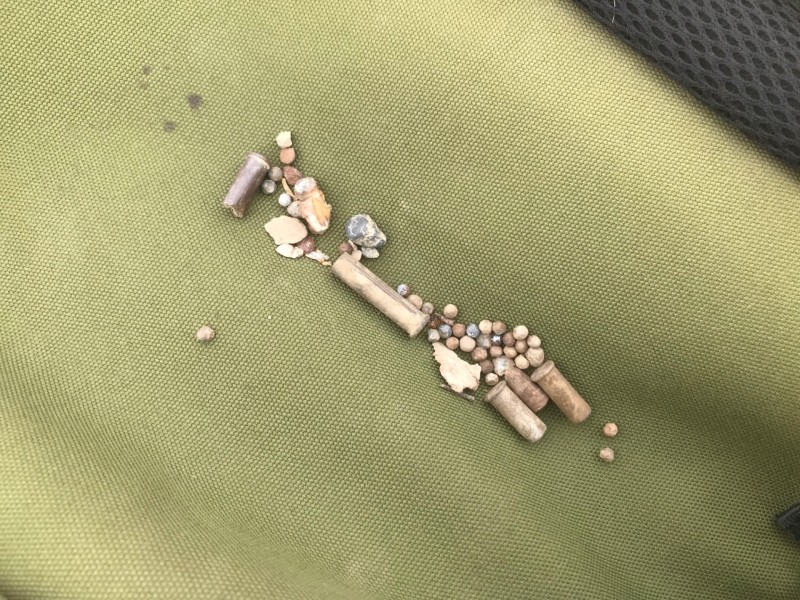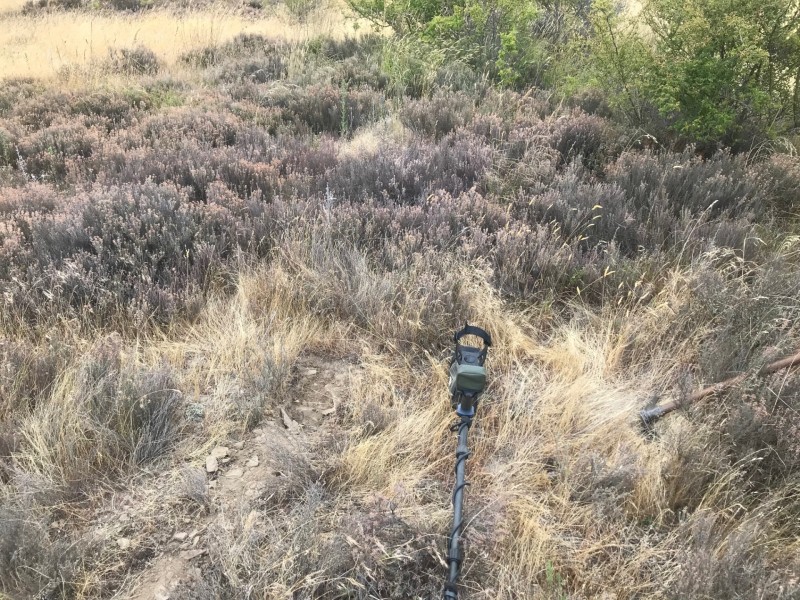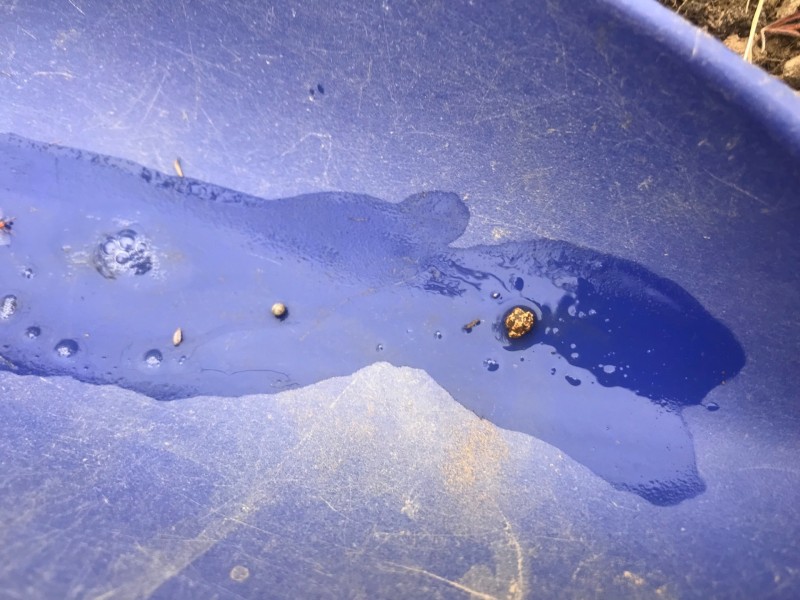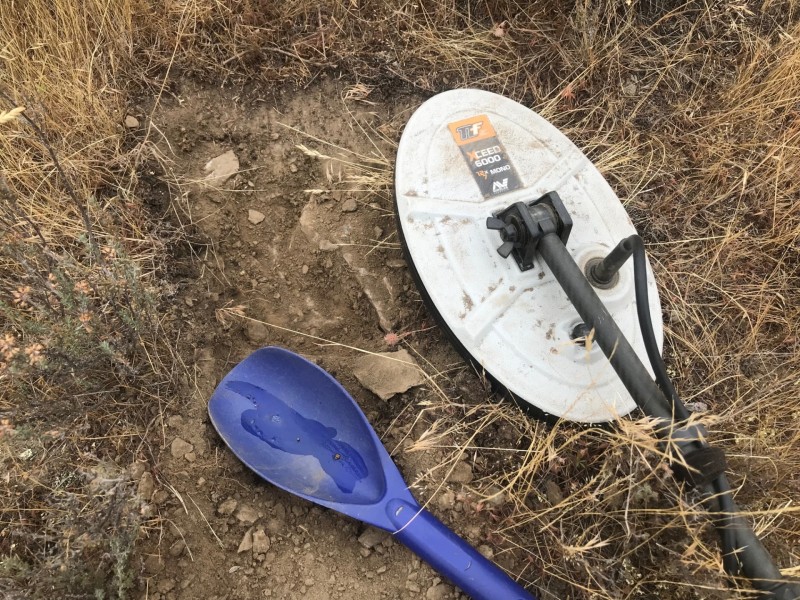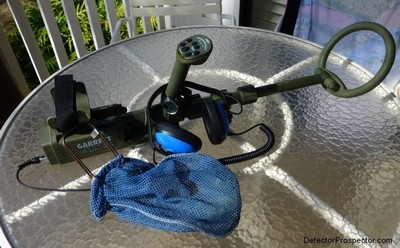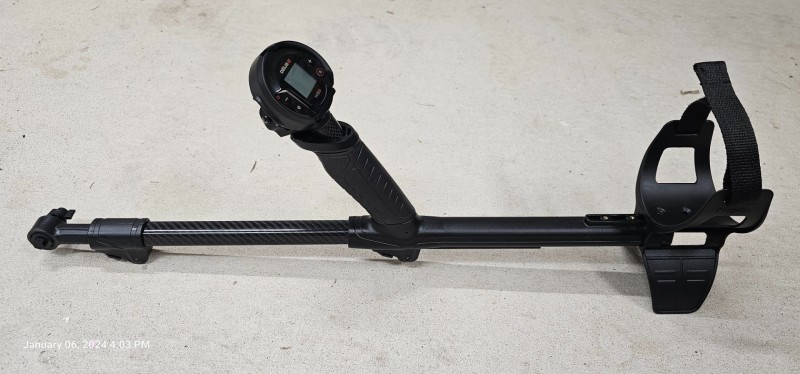Leaderboard
Popular Content
Showing content with the highest reputation on 01/07/2024 in all areas
-
Yesterday was a sunny day here in Eastern Oregon, but cold. I drove to the hills anyway and despite the snow (about 3 inches on the hills), was able to pull out three pieces of gold in some hillsides that were melted by full sun. Got a .7 gram, a .2 gram & and a two-inch specimen, that I guess has about .25 of a gram. Total about a gram. I'm sure there are other members that are having withdrawal symptoms like me, so I guess there is hope. It is snowing here right now, though, so we'll be shut down hereabouts for a couple of months. Was using the 6000 and swinging very slow, due to the EMI. Lots of deep trash, mostly shotgun pellets, bullets, shoe tacks, etc. I'm really pleased with this detector and the Bluetooth headphones. (A Gerry recommendation.) Had to clean the Trailblazer today though. The sun melted the roads to a muddy mire on the way home.17 points
-
Although these pieces weren't found with a detector, I think what I relate here is relevant to this site. Background: This past summer my wife was aiding a friend who was downsizing as the result of a divorce. She had several jewelry rings that had been accumulated over the years but didn't remember their history. Likely some were family hand-me-downs and others were gifts or even purchases she had made herself. Her feeling was that they were of little value but my wife asked me about them and I said I would dig deeper. Thus initiated this rather detailed study. I probably spent upwards of 25-30 hours, maybe more, with this investigation, but it was certainly a learning experience and I enjoy those (if I choose them myself 😀). Items: I initially broke the ~25 rings into two categories -- those that were (by eye) clearly junk and those that might have precious metal content. I don't have a photo of the first group of half-a-dozen or so. Those were in fact put in a yard sale for ~25 cents each. The second group was given the royal investigation treatment as follows: 1) search for maker and purity marks, 2) measure weight and (with Archimedes method) specific gravity [initially with stones included but later after their removal in cases I was able to do that], 3) find their air-test VDI's with the Minelab Equinox 800, and 4) perform an acid test on those that were still considered to be gold after steps 1-3. Here are photos starting with the gold candidates: Silver rings (all marked either 925 or 900): Junk rings (as concluded from multiple tests, not from simple inspection): These photos were taken shortly before shipment to the refiner so in most cases you'll see that the stones have been removed. Investigation & Preparation: Initially I did the specific gravity determination with stones in place and then tried to estimate (subtracting with guesses to volume and weight of stones) the metal-only specific gravity. In most cases I was later able to remove the stones and then repeat the S.G. measurements which were more appropriate/accurate. I used three methods of removing the stones: 1) when held in place simply by 'prongs' (is that what jewelers call them?) a needle nose pliers was good enough to bend the prongs until the stones fell out. 2) In many instances the back side of the ring had a small hole accessing the stone so I used a somewhat sharp punch (only as sharp as required) to knock them out. 3) In a couple silver ring cases the stones were glued in place. For those I used Lacquer Thinner (a mixture of several not-so-healthy petroleum derivative chemicals including acetone, methyl-ethyl ketone, xylene, toluene, methanol,...) -- easily purchased at hardware stores -- to dissolve the adhesive. Note that Lacquer thinner will dissolve most plastics and many wood finishes so care should be taken. Fortunately for me this worked quite nicely in this instance and the stones just fell out. Shortly I will show a spreadsheet with all the data. For the purposes of the shipping manifest, though, I defaulted to the stamped purities even though I was in some cases dubious that they were 100% accurate based upon the specific gravity measurements. I'm pretty sure the refiner has better methods than I to determine purity and will conclude pricing based upon their findings. No deception was intended. (I did not include S.G., acid test, or VDI data in the manifest, BTW. I highly doubt they would use my values or trust them if it's even something they would use in their determination methods, and if so they surely would make their own measurements independently.) Here are the shipment contents: Basically each gold ring was it its own bag. Silver rings were in two bags sorted by purity (92.5% vs. 90%). Each bag included an index card with metal type (gold or silver), marked purity, and weight. A separate summary itemized listing is shown at bottom. (Thanks go to Jeff McClendon for advising me on steps to take in preparing the shipment.) I sent them via USPS Priority Mail, insured, to Midwest Refineries , also suggested by Jeff. (Sorry but as I write this the link icon isn't working. You can easily find their website by a Google Search.) The total shipment cost (postage + insurance) was $25. I think I insured for $600 -- can't remember. Surprisingly and gratefully, I shipped on a Friday and had a check in hand the following Thursday! Here is a screenshot of a spreadsheet with measurement/identification details: Hopefully you can read it. There are three specific gravity columns -- initial measurements with stones still present, my estimate correcting for stones, and the final measurement after stones were removed. As you can see, based upon the gold and silver spot prices on the day of shipment (upper right) and assuming marked purities (one exception being the tiny 18k ring) and no refining/recovery/processing costs I concluded the (unrealistic) total precious metal content value of $901.94. Also shown is the returned check amount of $747.00. I was pleased and my wife's friend (recall she thought all were junk) was overjoyed. Take note of the Equinox VDI values. All silver and junk rings (recall these latter were not shipped) have high VDI's (in the case of silver, being up in the neighborhood of USA silver dimes, quarters, even halves) while the gold rings are at highest around USA nickels and going down to near iron (1 being the lowest non-ferrous reading on the Equinox). The rings gave different readings depending upon orientation and I just listed the highest value I got from the three orientation measurements. Another thing you may noticed in the 'comments' column are the details of the acid testing. IMO this isn't a clear indicator as hopefully you can see. In some cases there was no dissolution (meaning the purity was as high or higher than indicated on the acid bottle), in some cases the metal streak didn't appear to dissolve until I gently absorbed the liquid with a paper towel, in some cases the metal dissolved in ~10 seconds, in some cases 1 minute, in some cases it neither dissolved nor would it wipe/off or absorb. In particular, although I've found specific gravity vs. purity tables on the internet, I suspect there are more devils in the details than these tables imply, particularly for white gold. The actual alloy contents are likely the reason. Here is a photo of the removed stones: The lower tray are the ones that either gave good readings on a gem tester or otherwise appeared to be of actual quality. The upper are, from my conclusion, glass or low grade minerals. BTW, for one of the rings I punched out ~50 tiny stones! That large orange item might be authentic amber, IDK. It exhibits layering which I wouldn't expect from a fake, but what do I know? The two pearls passed the 'tooth test' (not sure if that is reliable) and the green stones may be jade. They came from the 18k yellow gold ring. Summary: This is my first (maybe last?) attempt at selling jewelry. I certainly went to more effort than is required, but again, I wanted to take advantage of this learning experience. As to whether the relative return (~83%) is representative of such sales, many of you are a better judge than I, but I felt it was quite reasonable.10 points
-
Came across this Monument way back in the early 1980s got a signal about 75 yards away from it. I started digging a hole with high hopes. That hole was the deepest that I have ever dug for a target. 2½ feet deep and all I got was an old axe head. The photo show some of the ground type I search in Maryborough Vic. Aus.9 points
-
Simon, you're getting soft. I heard some good gold was found recently up in Marble Bar, Western Australia. Probably found by these two old gals. 51C (124F) is getting a tad warm for detecting I guess, but when the gold melts out of the host rock into big blobs it makes for easy detecting. It's usually cooler around breakfast time....you can save energy by cooking outdoors.7 points
-
My original post was in Prospecting Page as that's where I usually hang, I'm a gold hunter. But after much thought, I'm deciding to put part 2 in the appropriate section. You can find write up part 1 (days 1 - 4) in the Prospecting page. Warning, long detailed read, with a few good pics. Day #4 As the wife/I stepped out of our room and headed for breakfast, we both noticed change in the weather, and it was already cool and breezy. I decided to hunt in the deeper waters in the morning before the stronger winds show up, usually afternoons. After some time of bobbing up and down with the rising/falling waves as they roll in and past me, I tried to keep my spirits up. Getting only a few targets here and there, I did happen to manage some bling, 2 rings, a bracelet, couple pair of sunglasses and a few coins. The one ring is a white gold 10K with a decent weight of 5.5 grams. The bracelet is stamped 18K, hopefully real and not one of those fakes? Once home I ran it through the tumbler and it cleaned up very nice, actually a stunner bracelet. The above pic shows links are all thin and or hollow, so it does not have serious weight, coming in at 19.5 grams. With the price of gold around $2000 an ounce, I’m also seeing more gold pendants, bracelets and chains that have hollow links to save on weight and cost. I am still not 100% certain it’s genuine 18K and need to get it tested. I’m pleased with my efforts and time for a bite and fill up of water. While enjoying lunch and viewing across the ocean, my wife commented how rough the seas and shores were getting. The pic above shows the palm trees blowing sideways and the white caps on the waves. Water is still mostly clear now. She’s always worried about me. As I get older, I also become a little more cautious of my activities. It’s not necessarily because I’m getting wiser, but more of me worrying about a broken leg, hip, ankle or other long lasting ailment. I know from personal experience how powerful a wave can be. I’ve been slammed a few times and once even took my scoop handle to the gut and knocked the wind out of me. Luckily I didn’t faint as I would have drowned. On a trip to Bahamas once, my video guy got slammed and blew his knee out. It finally took surgery for his knee to be right again. Waves are no joke and need to be respected. A quick kiss with “good luck wishes” from the wife and I’m heading back into the dunk trying to catch a bright and shiny ring. Well, the weather was really getting right down rough, and I only lasted a couple hours before I decided to call it a day. It’s not worth getting hurt and ruining the trip for a couple blings to already ad to what I have discovered. Heck, I’m already quite happy anyway. Finds for the afternoon only included a few coins, a crusty sterling ring and 2 pair of sunglasses. That crusty sterling ring tumbled up really well and it even has an "A" that's gold. Sometimes you don't know until you get home and start cleaning up the treasures, That evening while viewing over my dismal recoveries for the day, I realized…at least I managed a piece of gold (which on some trips is much better than my gold nugget success) for the day. At the end, it’s just like the small nuggets of the desert, even a thin gold band or charm find, it all adds up. Sure, I’m not scoring rings like I’ve done in the past, but there’s many factors and sometimes it’s just the times and generational changes. One of the other elephants in the room, the weather…. has a lot more to do with ones Success than we usually realize. Remember, the crusty sterling ring with the gold A was not even known at the time. Day 5.. Time to take a break. It became a body recover day and mind/soul relaxation. Indeed, a perfect idea as it was also the roughest winds and surf so far. I couldn’t have timed it any better. I spent time with the boss at the poolside enjoying a few drinks and occasionally walking over to the beach and seeing stupid people get tossed around in the back of my mind I’m thinking, you're certainly helping me for my next hunt. Dinner for the evening was interesting. We wanted to see a show, so did dinner a little early. The special was Pork of the Pig. They should have actually called it “pork of the pigs head”. I had to catch a quick pic for memories/proof. I so much wanted to put that big ring on the pig's snout for a quick pic, but I had not enough drinks yet and besides, the ring was securely hidden in the room. It would have been a hoot though to see such a pig/pic. Day 6 started with strong breeze which was frustrating to my mindset. Notice the shallow water is much murkier and starting to see a few shells/small rocks being exposed. As I walked to my intended location, I started doubting myself a little about being able to swing a good day's hunt. Getting into the rough water where the waves were cresting, I usually desire to get beyond them, so I’m not tossed around as much. Plus, in the wave breaks and another hurdle is its very time consuming trying to recover the target. My military mindset says to “march on Marine”, and so I head out. As I’m walking through the rough, half-hardy pushing my detector ahead as I’m working to the deeper less ferocious wave activity, I actually get a low tone signal…. Now what??? I’m thinking… as I realize the importance of low and mid tones, but also the thrashing my body and equipment will take while trying to recover target. I decide to chase after the signal anyway…. and just as I go to retrieve, a wave slams my backside and thrusts me forward totally out of control of the situation. Mistakenly my body lands on Manti and I can feel the coil stuck between my legs. As my 230 pounds is trying to recover with my arm strapped into Manti arm cuff, I feel something give….and I know it’s not well. Getting my bearings and my arse with Manti to the beachline and out of the wave crash zone, I see with my eyes what my arm and mind were feeling…what the give was. SNAP…The coil is dangling by the cord of the end of Manti shaft. In total disgust I realize nothing I can do but head back to the room and get the backup. In the room I realize my backup is a brand new Manticore and so I really don’t want to use it. I decide it’s best just to take the lower rod from the backup Manti and use it on my original unit. Besides, I didn’t have the coil cover to the backup unit all zip tied together. Side note. For you water hunters. I highly recommend you zip tie the coil cover of the Manticore to the coil in 3 or 4 places as they easily fall off. I actually know a few folks who remove the coil cover all together when water hunting. Now up and running after a half hour delay, I’m determined to get at least 2 or 3 hrs swing time today. Taking the previous day off, I get this “must do it anyway” in my head. So off to the beach I go. This round (I lost round 1) my plan is to immediately walk through the wave break zone and out to the semi calmer waters at depth. Yes, I realize it’s going to be a tough day but troop on. Again, if I had not taken the day before off, I’d probably call it done. In the deeper swells, I swing, bob up, come down and swing, was the pattern I did for the next 15 minutes or so before I’m rewarded with a ring for my efforts. 1st target in the water was a thin sterling ring, followed by a nice 18K yellow gold 6.4 gram band, and surprisingly another 10 feet away was a 2nd yellow gold band of 14K weighing 2.6 grams, followed by a monster ring from those cartoon figures. Interestingly, that one small area seems to be some kind of trough or settling zone. Why I think so, well 6 targets and 4 of those were rings, which the other 2 larger heavy coins. Day 7, I awoke to the evil winds a howling and realized my day was going to be a tough hunt. I decided to walk quite aways to attempt at finding a calmer section of water. On occasion I even take a tax to a couple well known areas that have built in wave break. My walk paid off and I noticed a resort down the way which had a section of semi calmer waters. This beach I usually don’t hunt as it seems to produce more coins and trash than some of my favorites, but at least I get to hunt. As I walk out into the water and look back, down a hundred yards, I see a sand cut and also notice much sand movement has occurred in water as well. This scenario can be an indicator that I could have a banger kind of day at his location. I’m excited for what my mind starts racing to expect. Well, my finds didn’t exactly overflow with Gold as I ended up with mostly heavier targets and unfortunately only 2 rings. Luckily one of them being an 18K yellow gold. The other is a crusty sterling ring that’s been in saltwater for quite some time. Yes, I did manage more coins and trash than usual, but that’s the breaks when leaving my favorite areas for stretches of the beach that are not on my high points list. I shouldn’t complain at all (I did get gold) but honestly, I was a little disappointed. Notice above, the coins and items recovered have been in the water for some time. This is good indicators of some potential great finds, if you are willing to take a chance in the water. I recommend you have a buddy...just in case. Day 8/9 were some of the strongest winds I’ve encountered at Cancun. Again, my wife mentioned the potential hazards and events (broken shaft) I already experienced. Hinted that I should spend time with her and to be thankful for what I’ve already recovered. Actually, she is correct because some of my finds were really top notch. Even though I didn’t get a high-end diamond ring on this trip, I managed some brand name designer piece. The beach was red flag both those days and to the point they kept asking folks to please stay out of the surf and to only use the pools. I’m not the hard-core Marine I once was when I first started going South some 15 yrs ago, so I took the bosses advice and called the detecting part of my job of this trip, an end. Just out of curiosity and the morning we left, I walked to the beach to get an idea of what was happening, quite a bit more of sand movement had taken place over the last 2 days of extreme winds and tidal movement. I was sure there had to be more gold for the taking. Oh well, there always next time. Wrap of the trip finds I brought home. Missing one sterling ring and one small 14K gold band my wife tipped herself. Total of 25 rings were recovered. My gold counts. 10 gold rings and one sterling ring with a gold overlay “A” letter. Another gold item is a very thin 10K box chain type gold necklace. Still need to get the dentures tested as it could have value. Weight of the gold, 1.620 ozt, not counting the bracelet. Not knowing todays trends, brings me to another point. On previous trips, I have had 4 or 5 sunglasses days. I only know Ray Band as having value. Well, I was giving some away to the lifeguard one day when someone was telling me how expensive a couple pair were. I have since learned to look them up on google before giving away for free. After all, I do give aways most of the coins, most of the cheaper nonprecious metal jewelry and even on occasion a tungsten or sterling ring. I try to help those at resorts who make my trip more enjoyable. Update on the dentures and BVLGARI Ring. After getting home and in contact with Cooperate, they assured the resort would contact me. They did. I emailed a pic of the dentures and also mentioned finding a BUGARLI ring. They replied back saying that nobody had reported them lost. I find this quite strange as I have had issues in times past as well. Honestly, I don’t trust the folks that deal with the lost and found at these resorts. One particular time, I just left the resort and got to the airport, while in the restroom, I realized my $140 electric razor was sitting in bathroom at the resort I had just checked out of. I immediately called and told them my room #. They put me on hold for a bit, came back and told me that no such item was found in the room. Another time at a different resort, I accidentally left my dress shoes for evenings out with the wife, under the bed. When I returned from the trip, I realized they were gone. Again, $100 shoes and nobody knows anything about them. Well, if and or when I decide to sell, at least I know I did contact the resort and tried to see if they were that important to someone that they would report them lost. Not reporting a ring, ok I could see that as some folks don’t even know they lost one. The dentures though, how could someone finish a trip without them? I’m most certain they would have reported, unless so embarrassed, they decided not to. That's the end of my 2023 season hunt in the Caribbean. Manti never leaked and that's great news. So far, I'm pleased with its results but still feel a CTX 3030 has better depth on man's gold wedding bands. To be fair, I do not have even close to the number of hours in saltwater with a Manticore as I did the 3030. I know, it takes time and tuning to get dialed in and eventually that will come, I hope.6 points
-
Late to the thred Dutchman PM sent on the 17 inch coil... That NF 12x7 sure is a smooth running coil and does well on small gold but I've found the Coiltek 10x5 to be the better of the two on the smaller stuff...It really surprised me on a heavily hunted patch that had been gone over with the NF 12x7 strick6 points
-
Very cool. Gems are probably worth much more but getting them gia certified is around $100 per ring so a little investigation first can save quite a bit. Don't rely on the acid tests, they are an ok ballpark but I am finding the test kit I have seems off. In particular the 14k solution seems too strong so many of the stuff I find tests at 8k even latest bracelet chain i found that was clearly marked 14k.5 points
-
Well done, I’d give my left eyeball to be In your climate at the moment, stinking hot summer here, went gold hunting with JW today and the heat near killed us. You did far better on the gold too! I wonder if the damp ground helped you, it’s always exciting to hit the gold areas here after rain, it seldom rains due to the mountains blocking it but when it does it helps the ground light up with gold. Its great to see all these new year gold found posts.4 points
-
Nobody on these forums has to preface anything with IMO because everything posted is only somebodies opinion. If anyone thinks they are just stating facts - well, no. All you are doing is stating your opinion of what you think the facts are. I agree with Chase. I state my experience, the other guy states their experience, somebody else states their experience - the reader can decide for themselves what is what. So, long story short, my style of posting is to state things as if they are facts. They are in my experience, but maybe not others. With metal detectors in particular everything depends on the ground and the targets, multiplied by operator experience. What is true for beach hunters in Florida is 100% not true for me nugget detecting in the Sierras. Different places and totally different ideas about what works and does not. The point is to take it all in and learn, not insist any one viewpoint is the "correct" one. Learn to see the big picture.4 points
-
Man, That's quite a bit of work but as you said...you wanted to learn. I know of a couple customers who send their jewelry in as well. I don't think they go to the efforts and detail (in fact I'm quite certain) as you did. I still have not decided if I]m best to sell them individually to get top dollar or not waist as much time and work with a smelter in small volume amounts. Thanks for sharing.4 points
-
Unfortunately i was away for christmas and missed the crazy surf. Came back the 30th and stopped by the beach on my drive up. Got a gold ring right off the get go, then nada. Came out on NYE and got 5 gold rings! New years day i got 2 more gold rings. Then got out today and got a gold pendant. I doubt I'll ever have a streak like that again but it was fun. In all i had 5 additional rings, 2 silver and 3 junkers. Also got around 15 silver dimes, one silver quarter, a clad half dollar, and around 200 clad coins, mostly dimes and nickels. Gave a few of my silvers to a kid who was detecting with his trusty bounty hunter.3 points
-
3 points
-
This is why I sold the remote and kept the WS6 master. But I still zip tied the WS6 mount to the mount that attaches to the shaft that way it would virtually be impossible for it to ever fall off again.3 points
-
Sorry, I shouldn't hijack your post......Anyhow, If you can find the small nuggets then the big ones will take care of themselves. Maybe my post will help melt away some of your snow.3 points
-
3 points
-
The ATX just like the Gold Monster has bump sensitivity under some conditions and settings, and in my opinion expecting it to have none is expecting too much. Like Gold Monster users, you either learn to work around it or get a different detector.3 points
-
I define positive ground balance as the detector producing a slight sound when the coil goes to the ground. I define negative ground balance as the threshold going away, being suppressed, as the coil goes to the ground. There are almost no cases where a negative ground balance is going to help. In fact it can suppress the faintest signals if they occur while the coil motion is even slightly downward or ground rising under the coil. I always did a ground grab with any FT 19kHz machine, then manually bumped the balance one notch positive. This can easily be tested with any tiny target in the soil. A slight positive balance will preload the audio and often help the signal. Negative balance, just the opposite. I have heard about machines that people claim do better with a negative ground balance, but I suspect perception is more at work than verifiable proof. In the end it's not really an ask the question sort of thing. It's go find a target in your ground (when you can) and test it both ways and see what works better for you. But me, I never, ever ground balance negative, but do very often go just a touch positive.3 points
-
August 12 2002 The crew was up at dawn with the exception of Conor who didn’t come out of his camper until just after 8:00 AM. He didn’t have much of anything to say to me and he and Bill went up to the Hidden Mine with their new detectors. In the meantime, Jacob and I started up the trommel and got to mining gold. The place we were digging did have fine gold but it was all tailings from the upper mining area that had been shot down the mountain over 100 years ago. Occasionally we would pull up an old homemade bucket or some other bits of scraps from the old timers. We didn’t see anything of Bill and Conor all morning. At lunch Jacob said we would run the gravel where we were digging for the remainder of the day and do a cleanup and then do a gold weigh tomorrow to see if the ground was worth the trouble. He had been doing test pans with poor results and wasn’t confident we were going to make much gold there. We ran the trommel until dusk and processed a whopping 275 yards which gave us a two day run of 425 yards. I knew we had gold but how much gold? Tomorrow I will tell the story. Conor and Bill had already had their supper by the time Jacob and I got back to camp. I asked Bill if they had any luck and he shook his head no. Conor was silent. I asked Bill how long they were going to metal detect the area and he wasn’t sure. He said they wanted to comb a large area from the mine heading outward to see if they could find anything. I wished him good luck. TO BE CONTINUED .................3 points
-
I am probably going to rant but will try to get all the information out. Been using .71, since inception and now just changed to 2.0. Summary: I was really impressed with the overall difference between the two operating systems. Beach and Beach Sensitive used with 9"coil. Will provide all my settings if you want. With 2.0 1. Better handling of Black Sand mineralization. 2. More punch power, with better TID's 3. Better TID at depth. 4. Not as much Iron up-scaling [but a caveat] 5. WAY---WAY easier on the ears with mineralization noise. Identical sensitivity and the ability to hunt one or two-points higher sensitivity. 6. Good job of still blanking bi-metal coins. I started right away with positive results. VERY deep coins that were reading strong in volume and TID. Noticed good iron blanking and Black Sand disruption was more muted on the ears. Meaning easier to pick out targets from ground noise. Today's take, with trash:2 points
-
made a mistake with my order I knew he was on it and wanted to correct my mistake he got in touch and sending me the right one and the other letting me send back my mistake no extreme fees a spot on guy and you won’t go wrong with him he cares enought and cares respect over buisness a real trooper thanks for making my mistake pay off and deal with it like a trooper not many left like that these days Thanks Rob for stepping up to the plate and shine thanks2 points
-
Reading about the success of so many forum members on their first 2024 hunt made me itch to get out myself. So, I took an afternoon before the storm front moved in to go hunt the site where I found three 100+ year old coins and a token during my last couple outings. With my 11x13, I moved further along the crest of the hill from where I had been before. After about 30 minutes I hit a fairly solid 81. About 6 inches down I turned up a solid green IHP (1889). This is the one with the obvious scar around the 11 o’clock position. About one foot away I got a questionable signal with an ascending/descending tone mixed with iron tones, and an occasional 79 thrown in for good measure. If I swung one way, the tone ascended (my tone bins have progressively higher pitches with higher TID’s). Swinging back the other way the tone descended. Turning on the target made it dissolve into iron grunts. I am using a fast-based program based off of Rattlehead’s Silver Slayer program, and bottle caps are set at five. Typically, with this ascending/descending broken tone, I find bottle caps. But, 1 foot away from an IHP, I dug it anyway. Around 7 inches down up popped another green disc. I thought I had another IHP, but after I got it home I found out it is a 1918 wheat. Oddly, all I recovered from that hole was the penny. After recovering the penny, I swung the coil over the hole again and no iron. But, there was a 42 a few inches away. With two old coins, I slowed down and started gridding the area. About 20 feet away I got another questionable signal that was mostly iron tones, but I did get an occasional good tone and a 77 from one direction only and one angle. The backswing and changing angles resulted in iron tones. I have probably passed on many signals like this before. But with the number of 100+ year old coins I found here, and an old coin from the last questionable target, I was game. About 8 inches down, I found the unscarred IHP (another 1889). The pinpointer indicated no other targets in the hole. Just like the wheat, when I swung over the hole again, no signal whatsoever. This has got me wondering how many other IHPs or old wheats I may have missed. My soil is fairly mild - usually no bars to a couple bars. Does anybody know why I would be getting a preponderance of iron tones when there is no iron? My recovery speed was at one. I had varied it up to about 2.5 in iron patches but kept backing it down when the iron thinned out. I can understand a good target on the edge of detection may return sporadic good signals, but not why iffy signals from a lone good target would be largely interpreted as iron. In the same area, I found an old brass ring (83). There is an obvious join on one side. I cannot see any inscription inside or out. A 93 had me hoping for another quarter, but I am happier with the little silver locket. I dug too deep for that and had to break apart the plug to find it (the pinpointer missed it initially). The brass hinge has seen better days. When it opened, the hinge came apart. There is nothing inside anymore. Late in the day I got a solid 61. Thinking nickel, I again dug too deep. I was rewarded with the earring. This was about 3 inches down and is completely free of corrosion. It is also relatively heavy. I don’t have any metal or stone test kits/instruments. I was figuring glass or CZ, but I took it by a local jewelry shop. The guy took a look at it and said he figures it’s glass, but he did not test it. He said it is faceted wrong for diamond or CZ. ☹️ There appears to be a slight lightening of shade on the tip of the prongs. This makes me wonder if they are plated. There is no mark that I can see. The manufacture date on the Winchester Blue Rival No 12 dates from 1894 to 1904. The manufacture date on the Peters Target No 12 dates from 1902 to 1911. So, this is the second time I have found three 100+ year old coins in one day at this site. It is also the first time I’ve ever found two IHPs in one day. Combined with the jewelry, I was very pleased with my first day out for 2024! However, the oddest find of the day was the little palm pistol. It is 4.25x3x1 inches, and is too heavy to be a cap pistol. It is hard to tell with the rust, but the muzzle opening appears to be about 3/16 inch. The whole thing is pretty well caked in rust including the grip. Does anybody have any idea either how to clean it, or what it could be? I don’t know about anyone else but I am looking forward to many more good finds in 2024. Happy hunting everyone!2 points
-
Thanks for the feedback. Finding a 0.023 gram nugget, at around 1 to 1.5" deep, with the NF 12x7 is small enough for me and I have no need or desire to find anything smaller than that. If one didnt already own the 12x7 then the 10x5 might be a consideration but for me there is no need to own both.2 points
-
Hello everyone, I'm new to the forum. Started detecting back in the late 90's with a Whites Spectrum XLT. Unfortunately work got in my way and kind of got away from it until I retired. Now living in Saint Johns County, Florida, retired and looking to get back into detecting. I have found that there has been a lot of changes in technology since I started. I'm looking forward to this forum and meeting members. Stay safe, Longroad2 points
-
950 +/- shipped from Santa Barbara County. OBO obviously... 750 without extra coils. Haven't gotten an offer yet. WE SHALL SEE. I have a sdc2300 Mine Lab in route to me too. This was a great detector, I just need something more sophisticated with LESS settings for small gold and waterproof. I'm a river rat so this thing has to be babied near rivers. Note, it has never been swimming... The waterproof and basically one knob Minelab is up my alley... Trying to sell/ship before I leave town Sat for Colorado. Reasonable offers will be entertained. I take paypal and will ship immediately. There's a ups store up the road here in Santa Ynez. Pat2 points
-
2 points
-
Good point, but how do you find out? The rightmost ring in my 'junk' photo was a particular surprise because of how attractive it is. My eye said it would contain precious metal (more than just the gold plating). I haven't tossed it (or sold at a yard sale) so it still could work out that I've misevaluated it.2 points
-
My Quest mod shaft weighs exactly the same 14oz ( 400g ) . Which means a total of : shaft + deus2 coil 9 = 400 + 330 = 730g . Yeah feather light ..2 points
-
Thanks for sharing the information to us, and remember that some of the "Junk" items could be hard to find costume jewelry. Some of the old items can be as much as the real stuff or higher.2 points
-
Thanks for all the feedback guys. I spoke to two of my fellow prospector friends, (Chet and Art) who both own the GPX17 coil, regarding pros/cons of this coil. Based on their inputs as well as all of yours, I have decided to wait on purchasing a larger coil for the following (personal) reasons. One, I really like the performance and stability of the NF 12x7 mono coil on the 6000. It has been my primary coil since the day I put it on at the beginning of last year. Most of the time, I run it with gain of Manual 8 to 10, in normal or difficult, with the threshold volume turned down to where it is just audible using head phones. The NF coil appears to stabilize the chatty threshold inherent of the 6000 (yes, my 6k also has the audio/emi fix), especially when set to high gain. With this setup I investigate any slight threshold change and if repeatable then I dig. I found my personal best nugget of 19.6 grams, around 14 inches deep, a few months ago with this setup as well as a 0.023 gram nugget for my smallest. The NF coil has really boosted the confidence in my ability to find gold as long as I do my part. The elliptical shape allows me to get into spots that the 11 inch round coil wont and that is another significant advantage. Anyway I guess I am sorta hooked on NF coils performance and quality so I will see if the NF 16x10 mono will be released this year and if it has similar performance characteristics as the 12x7. Two, the Coiltek 14x9 option is too close in size to the NF 12x7 (imo) so just the simple math tells me that there is not enough to be gained regarding depth and coverage.2 points
-
The 14x9 Coiltek is a decent coil, very stable and as good as you can expect for its size when it comes to EMI, I’ve only used the ML 17x13 once when I borrowed it off JW and my impression wasn’t good as it lacked the small gold sensitivity people like about the 6000 which was proven on in ground undug small gold compared to the 11”. This is to be expected on a bigger coil and it’s purpose is ground coverage and bigger gold depth not small gold. I also found it very unstable but this was later proven to be my detector needing the EMI fix done. If it were me I’d ignore any feedback on 6000 coils from anyone pre EMI fix and even anyone with an older early built coil as they have made changes to newer batch coils not only with build quality with the plastic cracking on the coil and ears but also in relation to stability, my replacement 11” is much better than my original yet my original performed exactly the same as another original I compared it to with JW’s original before it died on him and I bought my 6000 a year after it came out hoping to avoid teething problems. A newer 17x13 might be a lot better than an early one. The 16x10 is a myth for now and may come or may not, I’ve noticed it was getting marketing done on Facebook with gold found photos some time ago that has stopped a while ago now. Coiltek should just make more sizes, at least we would get them in quantity and quicker, they did a great job on the 10x5.2 points
-
On the subject of the underground mines - here is a video of the old 1855 Nebraska Mine in the northern Sierra Nevada. I don't know if Bill is still working this mine but a number of years ago I got a lot of guidance from him. I know there is a lot of gold still in this mine.2 points
-
Remember Bill Anderson's story of The Graveyard Train where the miners had hooked a number of ore cars together & one of the crew rode them on the rails down the mountain to the creek. However, the train of cars had failed to negotiate a sharp curve and plummeted into a ravine killing the miner. Bill called it The Graveyard Train.2 points
-
A nice video showing some old ore cars. Note that the works were hand dug.2 points
-
Hold down the up arrow button (upper right) for 2 seconds and it does an automatic noise cancel.2 points
-
The Bad: While Iron up-scaling appeared to be in a better place there was one standout. Large Old Nails. I NEVER have dug one of these in two years of hunting with the D2 here. Today I started getting wrap-around targets that registered 80-86. This mimics my 10-peso coin, which comes in around 82 . After some trial and error, it was possible to hear Iron blanking on a 360 look and some elongation as compared to a coin object. But was much more difficult on deeper nails. This might take some ear training that I did not have to worry about before.2 points
-
I haven’t had much luck on the gold so far this year, a few days of nothing but junk, so today I gave up exploring and went back to my best patch find for another try. I was there a few days ago with the 6000 and 10x5 and spent the day to find nothing and wanted to move away from the patch into the deeper ground but all the 10x5 will do there is find me pellets so today I tried the 12x7. The detector ran perfectly, such a contrast to prior to the EMI fix. I had spent half a day or so in this deeper ground area a year or two ago with my GPZ and 15” CC and found a few bits, one very deep one too so I had hope there was more if I spent some time there and after plenty of pellets my first 2024 gold, only shallow and small but a notch on the belt. In the hole with it a tiny pellet, not sure if I first found the pellet or the gold 😁 What I like about the 7000 and DOD coils I really miss on the 6000, the double blip it does on close to the coil pellets, saves so much time. With the 6000 I have to scrape the ground clear of grass then check it, faint target ok then scrape more soil away in this rock hard ground even though only less than an inch the faint target is now loud, and of course being so shallow a pellet, all of that avoided with the GPZ double blip. It’s truly odd how faint targets improve so much on the 6000 with so little soil removed. I gave up on the deep ground as I was only finding pellets and even larger bits of metal were quite shallow yet started off rather faint and brighten up quickly with some soil removed. I was in normal max manual sensitivity and well ground balanced. I decided to go back over my patch that I tried the 10x5 on the other day with no success, hoping the 12x7 may find something but an entire afternoon of nothing, I guess the 15cc and 8” got it all that I can find, you may remember the videos of the patch with those coils a year or so ago, ended up about 16 grams over 40 or so nuggets I think it was. I think I’m done with the 6000, I’ve given it a good chance but just prefer the 7000 especially with the 8” and 15” concentric coil so next time that’s what I’m using, hopefully my luck returns for a good 2024 on the gold.2 points
-
Well, back home safe and sound after a couple weeks in Hawaii with my wife. We visited the island of Kauai for the umpteenth time. We like the laid back vibe, made even more so by being familiar with everything. We do what we both like - she relaxes in the sun and I go metal detecting. And lots of walks and dinners together. The back story is told at Steve's Mining Journal about prior trips made to the same location over the years. Hawaii has always been a pet project of mine as it is the most difficult environment I have even encountered for a metal detector. There is of course the salt water. There is also literally military grade electromagnetic interference (EMI) from military installations plus missile and satellite tracking stations. Finally, there is a mix of non-magnetic coral sands and volcanic basalt derived sands and cobbles. Throw in the heavy surf and out of control tourists on surf boards trying to kill you... things can get interesting! If you stick to the tan to nearly white sands you can get decent performance from many detectors. But when the basalt gets involved is where things get fun. Most prospectors are familiar with basalt rocks and the challenge they present in gold prospecting. Well, just take the same hot rocks and douse them in really salty water and heavy duty EMI and you have Hawaii. Multi frequency VLF detectors like the Fisher CZ or Minelab Excalibur do ok in in the stuff but lack any real punch. They do best in the whiter sands, but the basalt sands and cobbles really leave them feeling gutless. I went to PI detectors early on, and overall probably had my best results with the various White's Surf PI models. Again, however, they worked best in homogenous materials. Places where the white sands and basalt cobbles mixed gave the Surf PI fits as it hit on the basalt cobbles. In darker sand beaches it was near impossible to keep the machine steady over the bottom in the surf, leading to lots of false signaling. I tried several Garrett Infinium detectors in Hawaii and got tantalizingly close to the detector I wanted. The Infinium as a ground balancing PI could tune out the black sands and hot rocks and eliminate many of the false signals. But it introduced just as many if not more by an inability to play well with salt water and EMI. The interference in particular made the Infinium almost unusable at times. I really wanted a stable Infinium, and confirmed this idea by using the White's TDI in Hawaii. It seemed to solve the issues I was having with the Infinium and so I waited for White's to make a waterproof TDI. And waited. And waited. I waited so long that Garrett had time to take what they learned from the Infinium and another model, the Recon, and build a next generation PI, the Garrett ATX. I was cautiously hopeful that all the noise I had made over the years had been heard, but frankly, I was not getting my hopes up too much. On top of that, the good old days are gone. I used to spend a couple weeks in Hawaii years ago and never see anyone with a detector. This trip I saw people every day! Ok, often the same guy but also more different people detecting than probably all my previous trips combined. The competition has gotten fierce by comparison to the old days. Hawaii treasure of another sort - beautiful beaches lit up at sunset! The Garrett ATX is the best PI detector I have ever used for difficult water hunting. Hands down, no comparison. I have to qualify that by saying that what makes it shine is the severity of the conditions. A person buying it and using it on clean white sands in Florida would probably have a less enthusiastic reaction. There is a lot of confusion regarding ground balancing PI (GBPI) detectors like the Garrett Infinium or White's TDI. They do not air test well against good VLF detectors and indeed do not really perform all that well against them in mild ground. People never really understand what detectors like these are all about until they get into difficult ground. The kind of ground where the best VLF detectors lose half their depth, the GBPI detector just keeps plugging along, and all the sudden now have a big depth advantage. Not because they go so deep to start with, just that VLF detector fare so poorly in really bad ground. GBPI detectors only really shine in the worst conditions. Let that sink in because it is very important. Anyone reading this should not get the idea these detectors are the be all or end all for all circumstances. But when the going gets tough, when other detectors fall on their face, a GBPI detector like the Garrett ATX can be the answer. Tuning a detector like the Garrett ATX can really bother some people. There is this resistance to doing anything that reduces the theoretical max depth of the detector. As soon as you start getting into reducing settings the feeling is that "well, yeah, but now it does not go as deep". The reality is that any machine that can be run maxed out in bad conditions has left some performance on the table. You may be able to max settings in benign ground, but you should have to back off of max settings in really bad conditions. That is why the controls exist - to compensate for bad conditions. The goal is to be set as high as possible while getting stable performance. The ATX is a powerful detector, and so it should be expected the machine has to be dialed back in severe conditions. The ATX has three adjustments that affect the depth. The Gain control is the simplest. You decrease the sensitivity of the detector to help compensate for conditions that are introducing too much noise. Just like the Gain or Sensitivity control on a VLF detector. This control was lacking on the Infinium and is a major reason why the ATX is superior. There is the pulse delay, which Garrett labels as a discrimination control. It is, sort of. Without getting all technical on you it is also a sort of sensitivity control, in that increasing the delay or discrimination also eliminates signals from weak conductor targets like foil, hot rocks, or salt water. This is really the only control you have on the Infinium to deal with false signals and it serves a similar function on the ATX. Finally, you have the ground balance. The ground balance is basically another type of discrimination circuit or filter. The signal produced by the ground is determined and then eliminated. However, this comes at a cost. Items that read the same as the ground signal are also eliminated, and items near to the ground signal will exhibit reduced signals. The White's TDI makes it easy to demonstrate this. You can turn the ground balance completely off, and when you do so the machine air tests far better than it does when you turn the ground balance on. This is because of the subtractive nature of the ground balance circuit on the TDI. Also, because it has a manual ground balance, you can see the effect of tuning the ground balance control closer to and farther from a particular target response. Instead of tuning out the ground the control can be manipulated to tune out other items instead. It is just a basic discrimination circuit. Different ground balance methods can affect items to greater and lesser degrees so the example shown by the TDI should not be taken as being the same with all detectors. But the effect is real and does exist to some degree on all ground balancing detectors, both VLF and PI. So why use ground balance? That should be obvious - to tune out ground responses. If there is no detectable component in the ground you would be better off without the ground balance circuit. Such conditions rarely exist, but they do exist. Absolute pure white coral based sands are one of them. The ATX at its hottest will detect salt water however, and new to the ATX is the ability to ground balance out the salt signal instead of the ground signal, but you are trading some sensitivity for stability doing it. Long round about way to explain that when the Garrett ATX is turned on with factory default settings the ground balance setting is at a minimum. The ATX should be tried first with the factory default setting and on many beaches you will not want to ground balance it. Just leave the discrimination (pulse delay) at zero, set the gain as high as possible while still allowing the machine to be stable, do a frequency scan, and go. In Hawaii at my location however I could not do this. I could on clean sand but not in the cobbles I wanted to hunt. But first, a total surprise. My ATX was almost totally immune to the EMI that I had previously experienced on Kauai without even doing a frequency scan. The frequency scan was basically redundant. That one thing made the ATX a huge advantage for me before I did anything else. I would not have believed it had I not had a White's Surf PI along for backup and sure enough, when I fired it up, the EMI was there. It was discernible in the ATX non-motion mode but even then nothing to worry about. I. Do not know what Garrett did or if I have a magic ATX but this one thing alone really floored me. It absolutely eliminated my number one problem with the Infinium. Basalt cobbles in sand on Kauai A detector with all controls set to max is in theory getting the best depth. But if it is not stable you cannot work with it, so you have to adjust back to find the best balance. The ATX is a very powerful detector and so I found a combination of settings that worked for me to get quiet, stable performance. This is in no way being advertised as a setting to for you to use! It is what I did for this location and other locations will take different settings. In general, the more powerful all your settings can be the better while still being able to have a stable running detector. So the ATX with factory default (minimum) ground balance, zero discrimination (pulse delay), and max gain would be at its most powerful. The worse the conditions, the more you may need to dial the settings back. The problem is with all the settings maxed out the ATX is very sensitive to small gold, but that also means it picks up salt water and hot rocks. I played with the gain control and the pulse delay (disc) control looking for a balance that left the detector running quiet. A discrimination setting of three and a gain of seven made the ATX submerged in salt water run like a VLF. I periodically reduced the disc setting or bumped the gain higher and noise was introduced, so settled on the 3 and 7 setting for my Kauai beach. Then I found a fat basalt rock buried in the sandy bottom and ground balanced over it, eliminating the signal. I would be the first to admit these settings were probably aggressive and of course costing me some depth in theory, but I got what I have always wanted in Hawaii. A PI detector running quiet as a VLF and by that I mean just purring along with a threshold sound, and when it made a noise, it was because I had a target under the coil. Here is another way to look at it. A very hot detector will detect salt water. It will detect hot rocks. And it will detect things you want. EMI can also be an issue. The trick is to reduce the signals from the things you do not want to hear as much as possible while enhancing the good signals as much as possible. It may be letting unwanted signals through will also increase depth on desired targets a bit. It may also be true that too many signals from undesired targets will inhibit success. You have to decide for yourself where the balance lies. If maximum depth is the goal then digging more undesired targets may indeed pay off. In my case I had plenty of targets, so the goal was quiet, efficient operation. I would not hunt clean white sand set like this. I would have the settings maxed out. I had a strategy in mind here, and my goal was to detect in the basalt cobbles. I was not tuning the machine for maximum performance in the easy stuff, but for maximum performance in the worst stuff. I wanted to detect the places where targets were more likely to have been missed by other detectors. Finally, after one go with the stock coil, I switched to the 8" mono coil. A few reasons. First, it is easier to handle underwater and fits in depressions better. It can be pushed through sand ridges and is less likely to move on the shaft. And I could find items edge on with it easier than with the stock coil. By that I mean turn the coil on edge and drag it in the sand and it acts like a pinpointer on small surface targets. The edge of a mono coil is very sensitive. A smaller coil is easier to pinpoint with to start with anyway. And honestly, I used the 8" mono because I was worried about sand getting in the twist locks and giving me problems, possibly even seizing up the rod assembly. The 8" mono and shaft assembly was my sacrificial lamb. If it got totally screwed up my stock coil would still be fine. Garrett ATX with 8" mono coil (goodie bag attached to arm strap, waterproof watch on handle) I may as well relate now that I did have issues with sand in the twist locks but not as bad as anticipated. The lower two twist locks seemed just loose enough that at the end of every outing I just worked them back and forth and the rod in and out and they cleared. But the upper one gave me problems. It got sand inside that refused to come out, even after taking it off and working on it under running water for a half hour. For some reason that upper most twist lock was just a bit tighter to start with and the sand would not clear out. Yet it never quit 100%. I lost most of the ability to twist the lock but it still twisted just enough to hold the rod in place. I am asking Garrett for advice on where to drill a couple holes or maybe slots to see if we can get these things clearing sand a bit better. Overall I actually am ok with them but they need improvement. In other types of sand it could be a big problem. I am going to see if I can get my upper lock to loosen up similar to the lower two and will report back later. The rod assembly got scored up quite a bit from being extended and collapsed with sand in the assembly. I will post photos later. Nothing that bothered me but some might hate seeing their expensive detector getting ground up like this. I have to say at the end of the day the physical design and the rod assembly in the water were nothing short of brilliant. I have given the ATX low marks for prospecting as being a duck out of water. The waterproof design adds weight, complexity, and expense not required for most dry land prospectors. But in the water the ATX felt really, really good on my arm. It is slightly negative so will settle on bottom if released. But not much; it is essentially weightless on your arm underwater. The rod assembly was a dream. I was working in heavy surf with 40 lbs of lead weight on. I steadied myself many times by leaning on the ATX with absolutely no fear it would break, and the rod never slipped. I could get in the shallows on my knees and shorten the rod down as short as I liked. And just right, no fumbling for the right holes, just loosen a twist lock or two and put it right how I wanted it. Better yet, due to the three piece design, I could also extend the ATX to be longer than any detector I have used underwater. I was in 6 foot of water with just my snorkel in the air, and easily detecting around me. I do a lot of breath hold recovery in deeper water and the ATX was just so easy to adjust for whatever depth I was working at. So easy and so solid and tough that I 100% forgive any little work needed to sort out the twist lock situation. This is one really great handling detector underwater in rough surf conditions that would leave other detectors in serious danger of breaking. The 8" mono was perfect for me. It stayed where I put it and I pushed it around a lot. I learned quickly if I wanted to adjust the coil position to be flatter all I had to do is turn the detector over and push down on the nose of the coil. Maybe not as easy as pushing down on the heel of a coil with a rod mounted in the center instead of the rear but no big deal, mainly because the coil stayed put. After two weeks of heavy use I never had to adjust the coil tension and it showed no signs of having any issue with all the sand it ran through. I had no scuff cover, and the coil shows no sign of cracking, just your normal scuffing from use. The epoxy appears much improved from the old Infinium days. A weak point - that tiny spring loaded rod lock, the one you flip to disengage the rod and coil assembly. The tiny spring popped out on me once. I took it apart, made the spring end ninety degrees again, and it worked for most of trip, but slipped out again last day. Not a big deal but needs beefing up. Be sure when twisting the rod and cams while cleaning to not hold the detector body. You will be twisting against that little lever. Hold onto the rods themselves and twist the cams. We need to find out what the part number is for the coil and headphones connector covers. Everyone should have a couple extra. Better yet, a couple spare caps like are fixed to the back of the ATX to cover the male headphone connection when not in use. One of these to put over the male coil attachment point inside the housing would be very helpful when rinsing and cleaning the ATX. Take the coil off, put the cap on, and now no worries while cleaning. I will find out the part numbers and pricing for those and get some and suggest ATX owners do also. I saw no point on beach hunting with all the competition. One guy in particular walked the beach a couple times every day with a Surf PI. I saw a couple Surf PI detectors at work, a Minelab Excalibur, and a Tesoro Sand Shark or Piranha. They all walked the beach and only the Excalibur guy ventured into the trough when it was calmer once. I spent all my time in the surf or deeper water with a weight belt and mask and snorkel. I recover targets by fanning or digging. And I went looking for mixed coral/basalt harder bottoms instead of deep sand. I played on the beach a bit and hit deeper sand underwater but basically all my finds came off of more solid bases. I am not going to say the ATX was some kind of super depth monster. That would be misleading and really missing the entire point. I have no doubt it was getting as good as depth as could be wrung out of the conditions. I was easily getting nickels down to ten inches in the basalt, maybe a tad deeper but honestly it is hard to tell recovering targets underwater while holding my breath in the surf. The real thing I am trying to relay here is the ATX was rock solid, just like using a good VLF above water, but in the worst detecting conditions I have ever encountered. It allowed me to just get on with the business of detecting targets and recovering them. If I was lacking for targets maybe fighting for another inch would be the name of the game but I never ran out of targets. Steve's Finds in Hawaii with Garrett ATX (Click on photo for larger version) The rings just banged! Nickels hit hard. By virtue of the ground balance system large junk goes low tone and I ignored many low tone targets. That cost me some dimes, copper pennies, and quarters but that is ok. Nickels, zinc pennies, and rings go high tone. As do sinkers, bottle caps, hair pins, and aluminum. Still, being able to ignore low tone targets upped my odds some. Though I dug a lot of low tones also just to learn more and frankly, because I have a hard time passing targets. You just never know for sure until you dig them and I was there to dig targets. Still, this photo shows my target mix skewed to high tone targets. With the exception of a few large items discarded at the trash can this is every item I dug over the two week period and about 50 hours of detecting time in the water. Another benefit with the ATX is the adjustable target volume and threshold, a real boon in an underwater detector. I had brought Gray Ghost Amphibian phones with me that started out loud enough but then got too quiet to hear, so I had to FedEx a set of Garrett phones in quick. I like the sound of the Ghosts better but not if I can't hear them. I surmise the sound chamber was filling with water and so will return them to get checked out. First time DetectorPro phones ever let me down. The Garrett phones have a lower tone but worked just fine. The volume and threshold control on the ATX makes them much nicer to use since they can be set comfortably for both above and below water use even though they have no volume control themselves. You can even set the volume on the fly easily while underwater. This is a very nice thing that most underwater detectors lack. I have read a few posts by people very concerned about the placement of the headphone connector. Total non-issue for me. It is under my right elbow and was never a concern at any time. Icing on the cake? The ATX retains all settings when turned off. Once I found my magic settings I was so happy with how the ATX was running I was afraid to change anything and did not have to. Just turn it off, turn it on, and ready to go. Everything is just the way you left it. This is very important with the ground balance setting. It is the one setting you have no idea where it is set. I wish and am suggesting that when the detector is manually ground balanced the LED indications reflect the entire range and show you where you end up at for future reference. Right now the LEDs simply follow to audio and reduce to nothing when the unit is ground balanced. But where am I and can I get back there? You have no idea and neither did I. All I knew was my ATX was running great and recovering targets at what I thought was good depth so I left it be. I used rechargeables exclusively. I kept rough track of detecting time and charged up about every ten hours. Again, it was nice being able to pull batteries out, charge, reinstall, and when the detector was turned on again no tuning was required due to the retained settings. I carefully looked for water in the battery compartments each time but never saw a drop. I have total faith in the waterproof integrity of the ATX after what I put it through. I just got back and blasted this report out but will probably edit it a bit to smooth it up over the next couple days. I will also post a more story like version with more details and photos on my journal in the next couple days. I am cleaning up a few of the rings. There is one very old class ring I thought was junk but is encased in sand and lime I am dissolving away and I have a couple silver rings to clean up. Once again the big diamond eluded me but no complaints here, it was my best haul ever for a beach hunting trip. In no small part due to the Garrett ATX but I will take some credit also for really hitting the water hard. So here are the rings. The bottom line is I just had my most successful trip to Hawaii ever. I recovered over a couple dozen rings with the ATX and half of those were gold or platinum. Some silver rings, a nice 14K bracelet, and a pile of coins and the inevitable PI junk. This despite bad weather early on and all the extra detecting competition. Eight Gold and Two Platinum Rings Found by Steve Herschbach with Garrett ATX in Hawaii Another view later after the better silver rings were cleaned up, and that fabulous bracelet Again though, do not take this as some kind of crazy ATX testimonial. Pay attention to my caveats. Beach hunters in clean white sand with tons of hair pins have less to be excited about here. But if you have black sand beaches or worse, the ATX is a machine to at least be aware of. I just can't help it though, I really like a detector that puts gold and platinum in my pocket! Things I most wanted? An indication of what the ground balance setting is and an ATX version of the 14" Infinium mono coil. Thing I liked most? The way the ATX handled in the water and the way it adjusted up to handle the conditions. My last detecting nut cracked - thanks Garrett and especially Brent Weaver for obviously listening to my suggestions all these years! I would like to learn more about this detector as there is much it is capable of. How exactly does it compare with factory default minimum ground balance mode versus PI detectors that have no ground balance at all? I tried the no-motion mode a bit but saw no real value for what I was doing - there has to be more to it that is of value in other situations. Most importantly, what combination of pulse delay, gain, and ground balance is optimum for various locations and targets? I found some that worked for me but I am not swearing they were the best settings possible. I admit to focusing more on detecting than fiddling and so it is hard to get me to stop and do comparative tests when detecting time is at a premium. I look forward to seeing what works for others and will add what I can as I learn more about the ATX myself. This article was promoted from a thread on the DetectorProspector Forum and those interested in the article will find additional information in the posts on that thread. ~ Steve Herschbach Copyright © 2014 Herschbach Enterprises Steve's Mining Journal Index2 points
-
Tom Dankowski’s Settings for the Minelab Manticore Tom Dankowski was one of the original beta testers for the Minelab Manticore. During the course of this testing he developed a group of settings that began with the stock “Beach Low Conductor mode. This is arguably the deepest way to run the Manticore and my tests have shown it to be a very deep setting. Here’s how it works: A metal signal in the ground is not discrete. What I mean by that is that it’s not separate from the ground’s signal. What a detector does is to separate this orderly, distinct signal from the ground’s larger, stronger, more diverse one. Years ago detectors were set up to try and “punch through” the ground to detect a target. “(TR)” Later, with the advent of “ground balance” the machine could be set to “zero out” the ground’s signal by operating from a variable set point. Some detectors featured what was called “tone on tone.” With “tone on tone” you heard both an all metal signal and a non-ferrous signal at once. This made it easier for deep signals to be heard as the ground part of the response was already being amplified and heard. Anyone who has used a detector that features “silent search” would have experienced the performance loss that this creates as good targets have to jump up out of the “null” to be heard. Machines like the Whites “Eagle” and “Nautilus” machines were higlhy regarded for the depth that this “tone on tone” audio gave them. Tom Dankowski So with Dankowski’s settings, we have basically the same thing. Ferrous Volume is turned up to maximum (25) to bring up everything under the coil. The setting then relies on the Manticore’s strong processing to separate any non-ferrous targets from this big response. The program also features “Prospecting” type one-tone audio. This brings in the machine’s filtering (bias) to assist in pushing the “random” part of the signal down into the iron tone. The noise of this iron tone takes some getting used to but the results are surprising. It’s also quite a stable way to run the Manticore—even up at high Sensitivity levels (26/28 or more) because the noise is already there. The operator’s job is to learn to hear through it. If you have an old area where you want to see what’s “way down there”–this is the setting to use–given some practice. Appendix V: Tom Dankowski’s Open Low Conductor Mode Settings This is arguably the deepest way to run the Manticore. I would have to concur–it’s a “shocker.” This set up requires the use of basic skills to offset the open Ferrous Limits–sizing signals, using the cross sweep and Pinpoint where needed. As with any Manticore application, the graph also helps here–keeping you off the “partials” and cross-feeds. As with any high-power setting it also requires that you “listen good” and focus upon solid, “peaked” sounding responses. Beach Low Conductors Mode Volume: 25 Ferrous Volume: 25 Recovery Speed: 4 Discrimination Pattern: All Metal Ferrous Limits: Upper = 4, Lower = 0 Nothing Notched out. (Bring in the iron). Audio Theme = Prospecting Ground Balance the unit close to the edge of the saltwater [States Tom…] Run Sens on 24 or 25 or 26… depending / dictated by the salt-content of your particular beach. (Start at 24….. and see how stable the unit is. Then bump-up Sens accordingly). I get the feeling that you may be able to bump Sens up…even higher. Maybe even 28. IF you can run Sens 28…you are going to find the results…interesting. [Ed. Note: By this Tom means that the machine has extreme depth with this setting–I concur!]. I do recommend making the hotkeys: Upper Left Button = Noise Cancel. Upper Right Button = Ground Balance. Sidebar button = Iron Ed. Note. Listen for complete sounds with exension. Use the cross sweep to check your signal for consistency. If you are going to use the “Red Iron Indicator” keep your ID’ing passes narrow so as to get a clean reading. As well, this indicator is not always that accurate in black sand. Also, if the all metal noise is too much turn down either the Ferrous Volume, or the overall Volume. There’s also nothing wrong with adding in a reject block to make for cleaner target assignment although this will detract from the overall power of the program. Try this setting up at 28 and “hold on to your hat!”1 point
-
Not sure what you meant by "interested to see what garrett does with this". They've already answered that with the Axiom...unless you meant to type "Fisher". Impulse AQ is a beach/water machine only. Because it is designed with salt cancellation, you can't balance it on land in its present form you and therefore can't use it for land-based nugget hunting. Fisher hinted at making a Gold hunting land variant but it appears the whole effort has just died. The last gasp was them trying to sell off whatever inventory they had of the pre-production special edition Impulse AQ units they still had lying around. Joe OBN above was doing a lot of the work for them addressing shortcomings in their battery design and battery mount design with his own hacks. As you can tell, he loves the pure raw power and performance of the machine but they have gone radio silent on it. I wouldn't hold your breath waiting for anything else to come of this.1 point
-
1 point
-
Interesting to see the results ! Karma is smiling.🖖 VL might be right? That ring could belong to a mysterious foreign princess. It was the first ring the prince gave her. They are now king and queen and there is a REWARD !!!! There IS a ?% of possibility here... Or maybe your wife will wear it after you tell her this... 🥸 Nahhhhhhh ! But if you keep the ring you can use my story !1 point
-
I sold what I could independently, kept the one I liked, lost the ones that the wife liked☺️ and melted the junk gold ones with the dollied specimen gold and sold to it to the refineries.1 point
-
1 point
-
GPX 6000 test coils I know of some areas that have produced some large nuggets. So in pursuit of large gold I have experimented with winding some test coils and did some air testing. Results are with my poor hearing and varying EMI conditions. But the measurements work for my comparison testing. On bad EMI days the larger coils are very noisy. A 20 inch 12 AWG Litz coil might be the next one to test. Meanwhile I am experimenting with some large GPZ 7000 coils. Have a good day, Chet Coil Description 1oz gold coin Air test inches 30" x 30" = 34"RND 1.86mm flat spiral Litz wire 27 24" x 24"= 27"RND 1.86mm flat spiral Litz wire 27 23" RND 2.3 mm 14T 3 vertical rows Litz wire 26 17.5" RND 2mm Litz, spiral flat wound ID 14" 22 17" RND Vertical Wound 2mm Litz wire 21 17" x 13" Minelab GPX 6000 coil flat spiral layers close wound 12 AWG Litz wire 18 11" Minelab GPX 6000 flat spiral layers close wound 12 AWG Litz wire 17 14" Minelab GPX 6000 DD Coil 14 6" GPX 6000 DIY flat spiral close wound 56 turns 2 layers 1.86mm Litz wire 111 point
-
I don't normally look at YouTube videos but when I looked at this one I liked it. I subscribed. And then a list of similar videos came up and I liked a couple of those. Some of them have gotten so much better than the old videos I watched which didn't have any tone when finding a target. Do we have an area on the forum that rates videos? I can see that rating the raters and YouTubers would be a free-for-all!1 point
-
The iron stability is "fine tuning" for the IF. IMO, the Legend's 10 levels of IF is more than enough. As such, I find the Iron Stability settings to be unnecessary. I leave my Iron Stability at mid level 3, and just use the main IF settings. This may or not be related to that opinion, but Nokta removed the Iron Stability control in the Double Score.1 point
-
Been using mine since the end of January. I’m just now comfortable with changing some of the factory settings. It’s been more of a learning curve than I thought it would be as I have both equinox’s. It feels good in my hand and is well balanced. I really like the screen with the ferrous and nonferrous display, plus I’ve had instances where there were two nonferrous targets displayed at the same time. Turns out one was a pull tab and one was a small gold ring, tones were mixed but looking at the display I could see there were two different targets. My only negative comment would be the depth indicator is usually wrong. I primarily salt water beach hunt and and hunt in beach low conductor mode. I get more depth information listening to the strength of the signal than looking at the depth meter.1 point
-
Best detector i have ever used. Fast deep with a lot of data that is past your way From great sound and screen. Thanks Minelab.1 point
-
I'd just go the 800 myself in your case Jason, pick up a cheap one from someone "upgrading" to the 900 😛 You don't go diving, you look for gold and if you want ID accuracy for cherry picking the 800 is great. I'm not at all surprised about your report Jeff, I've been saying the same about the Manticore ID's since I got one, a big disappointment there, especially seeing they advertise it as having better ID's, that's a blatant lie if you ask me. I like everything about the Manticore, in fact love it, the ID's are it's let down, of course with messy ID's comes messy tones. It's certainly a step backwards when it comes to ID's and for that reason alone I will still keep using my 800 for situations I need that accuracy. The CTX is well and truly still king for ID.1 point





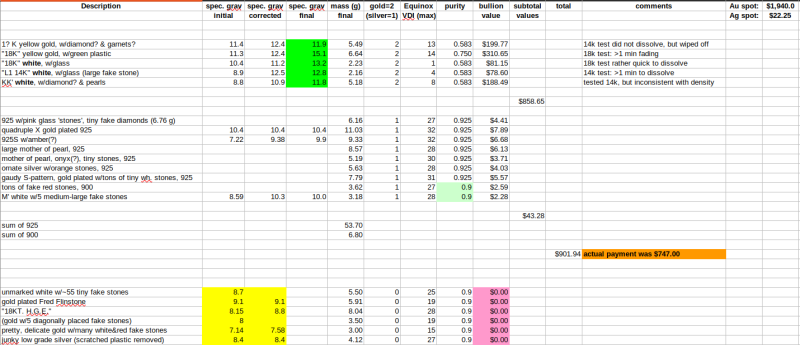

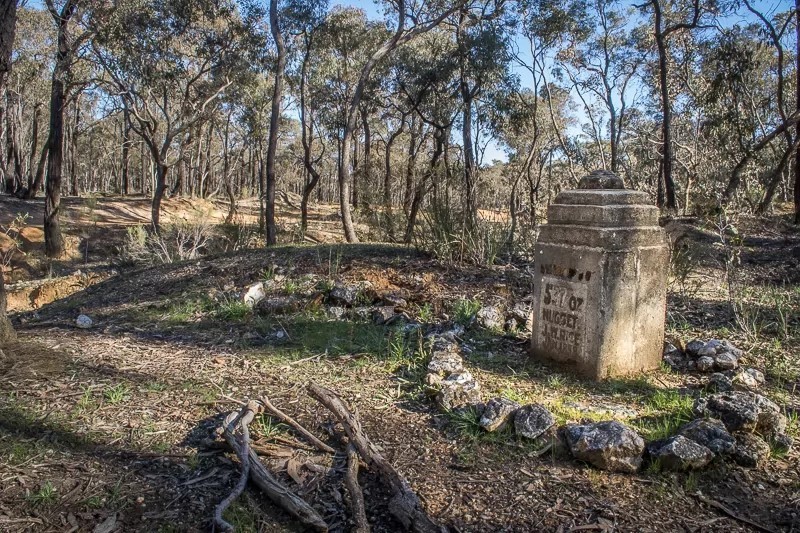
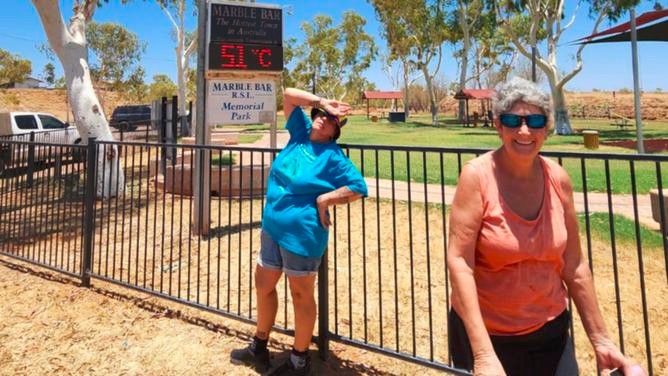
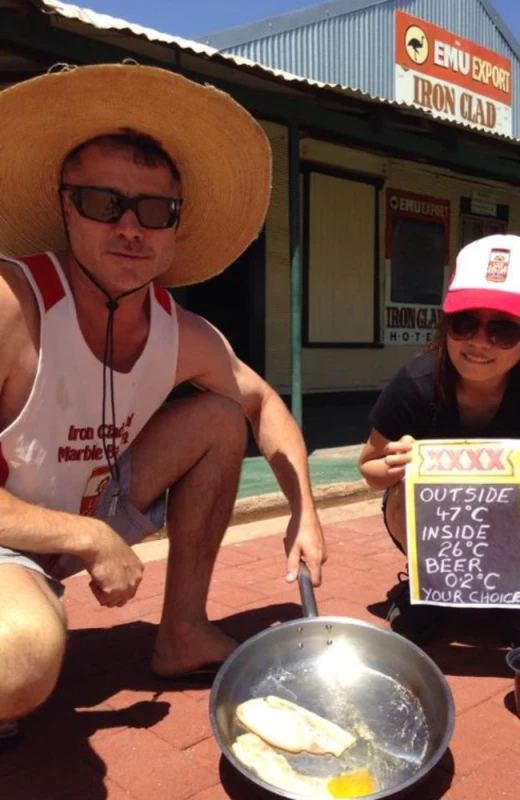
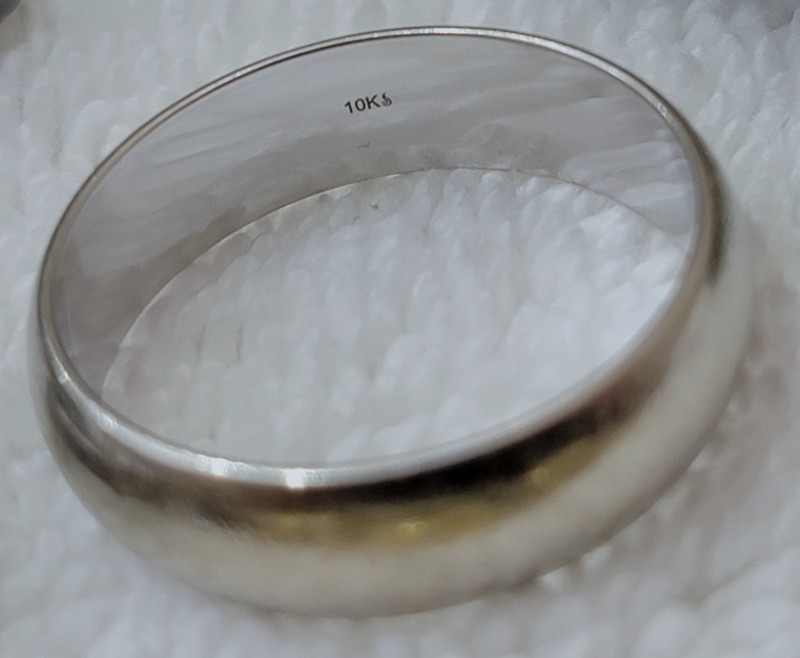
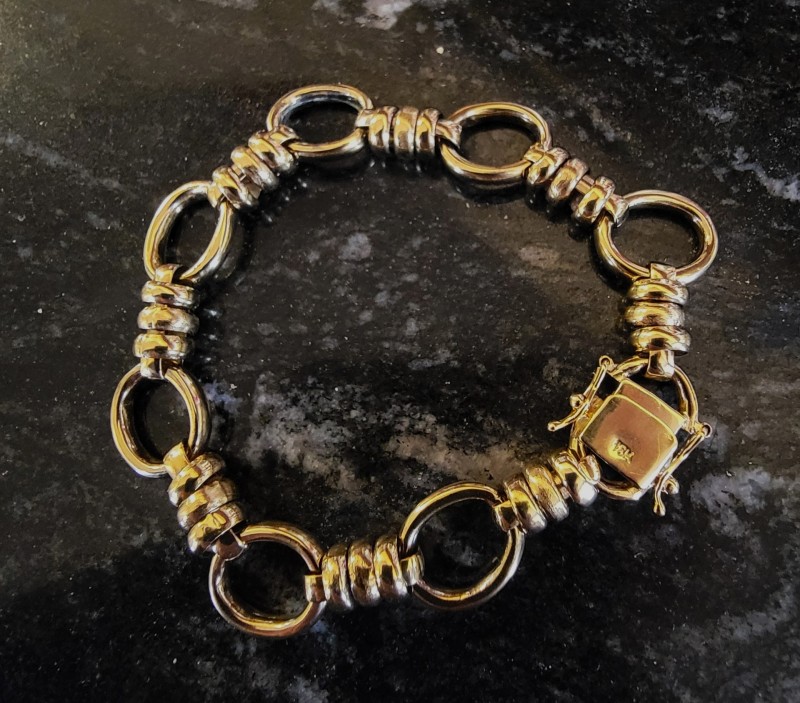
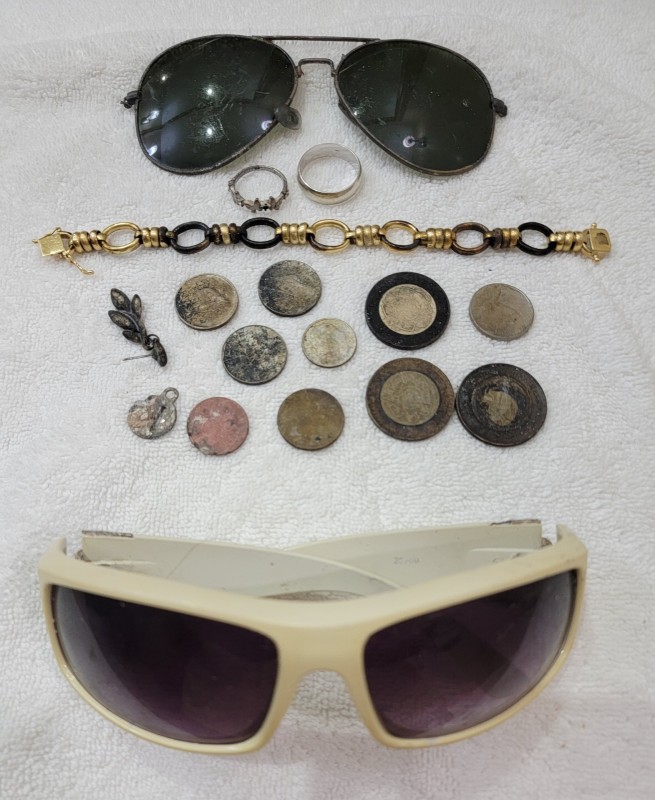
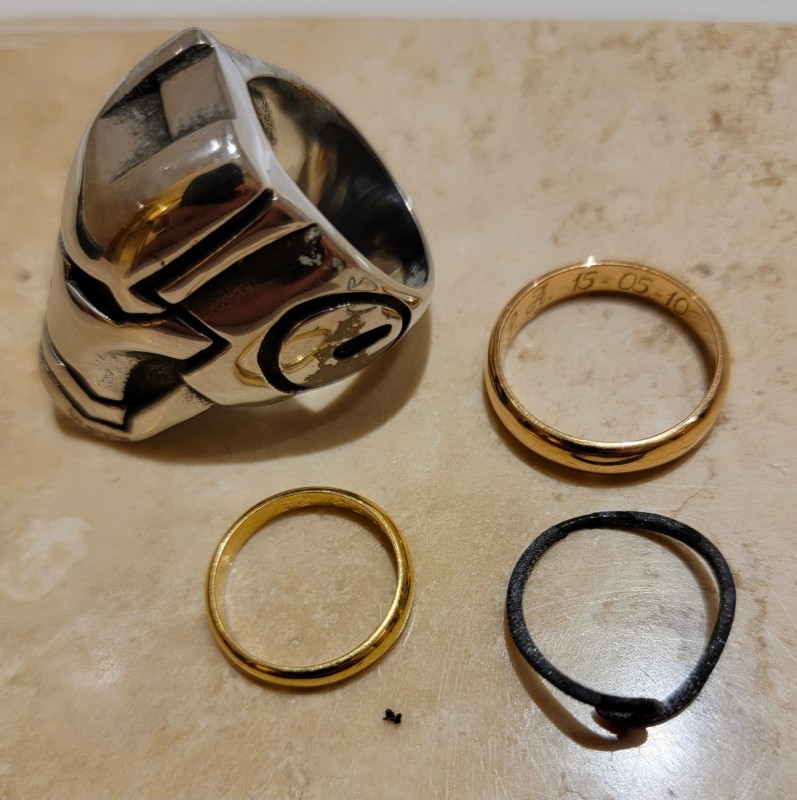

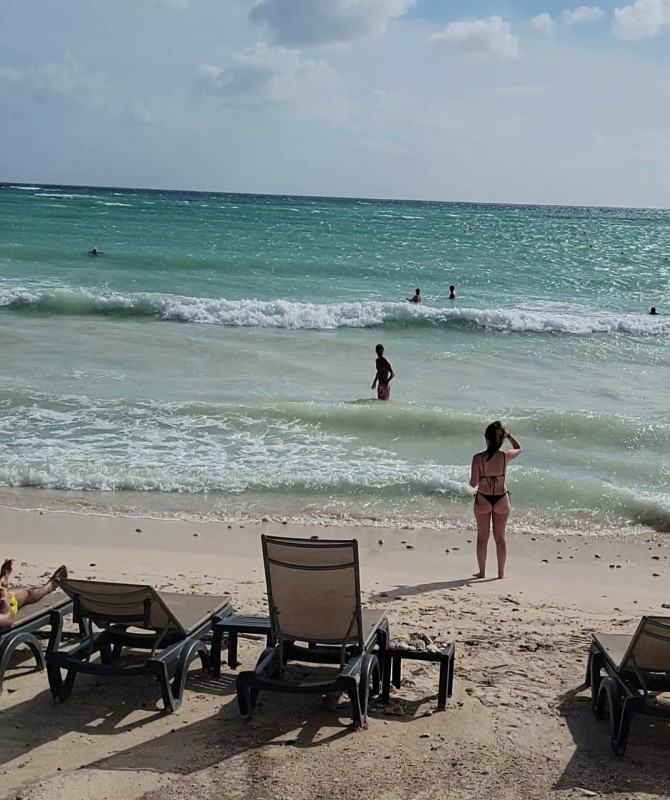
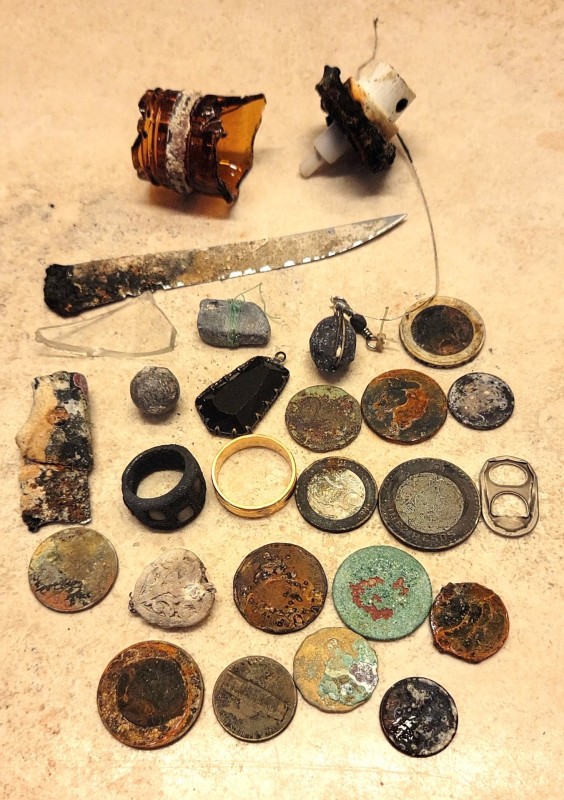
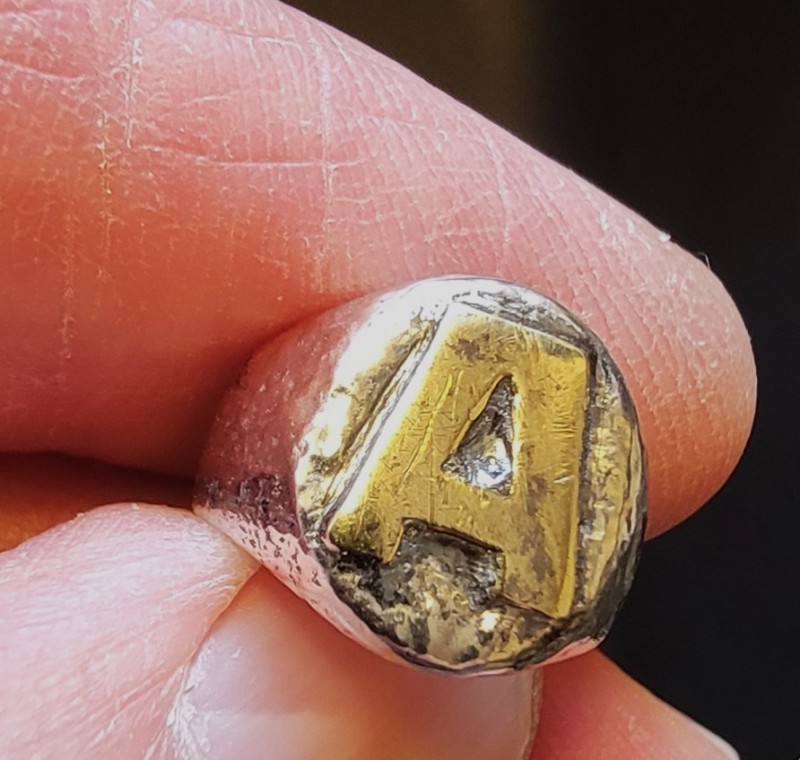
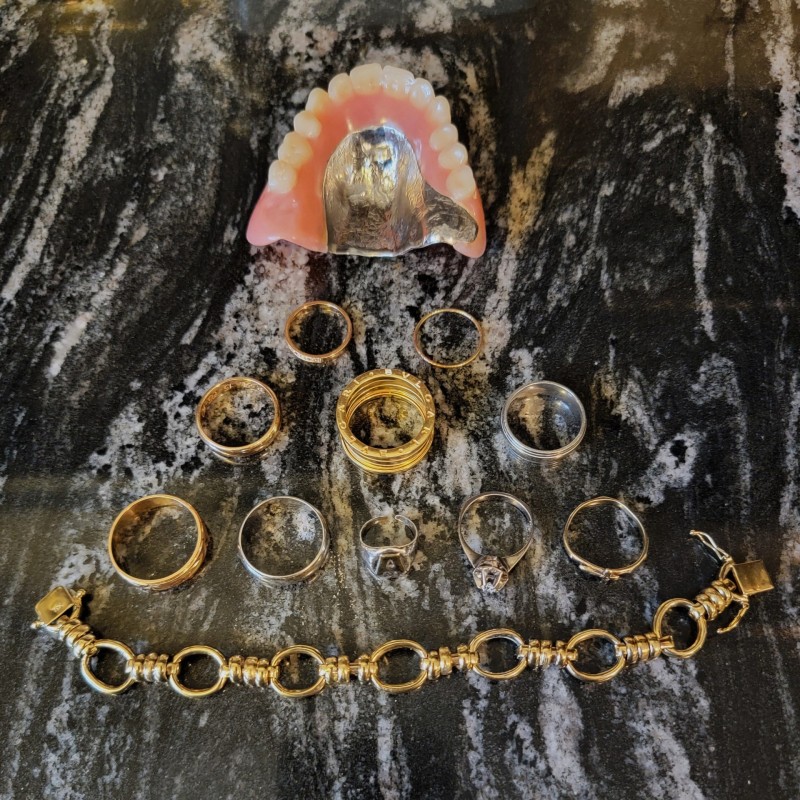
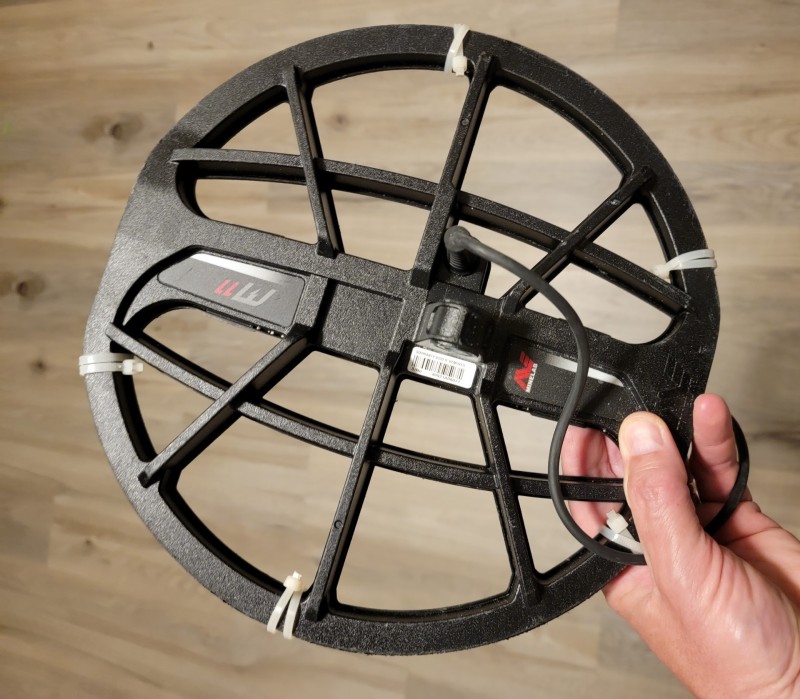
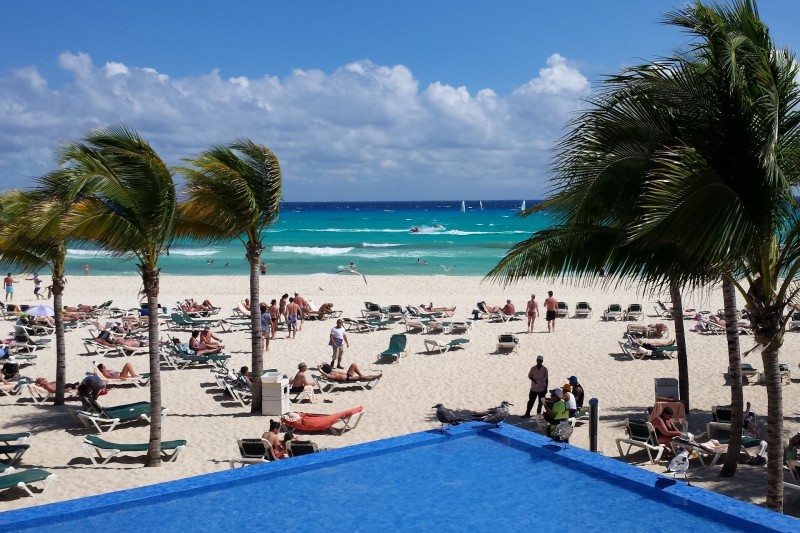
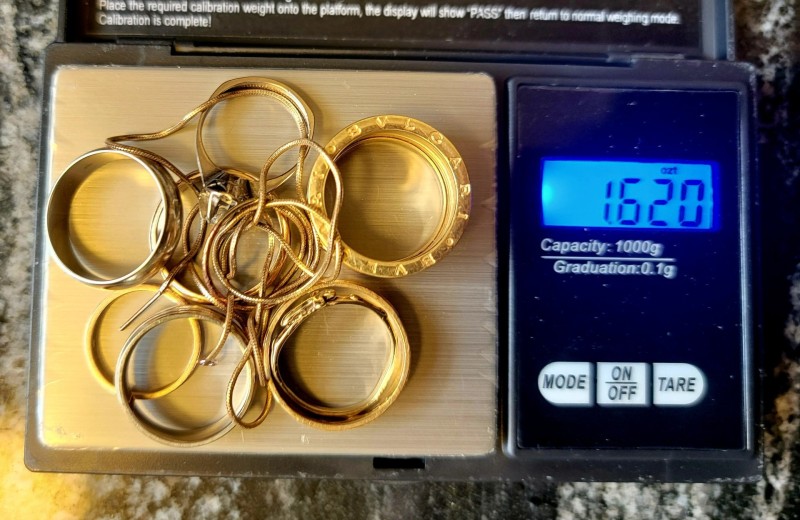
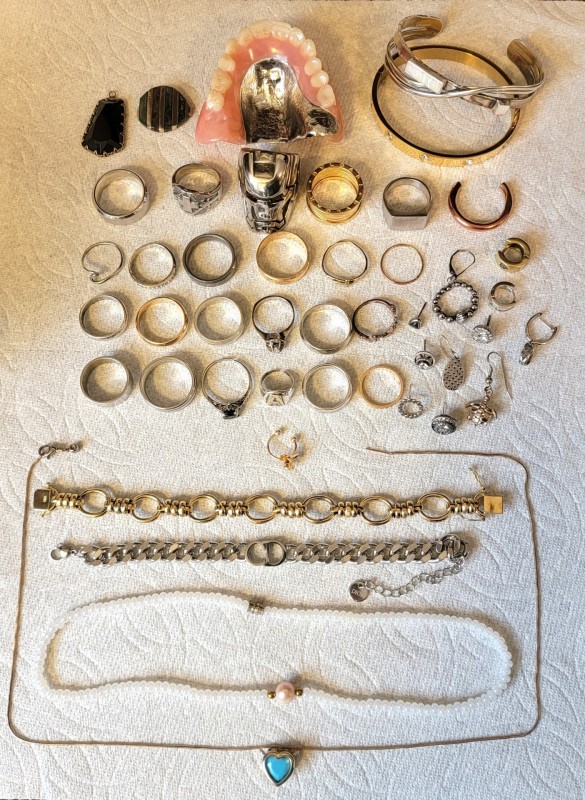
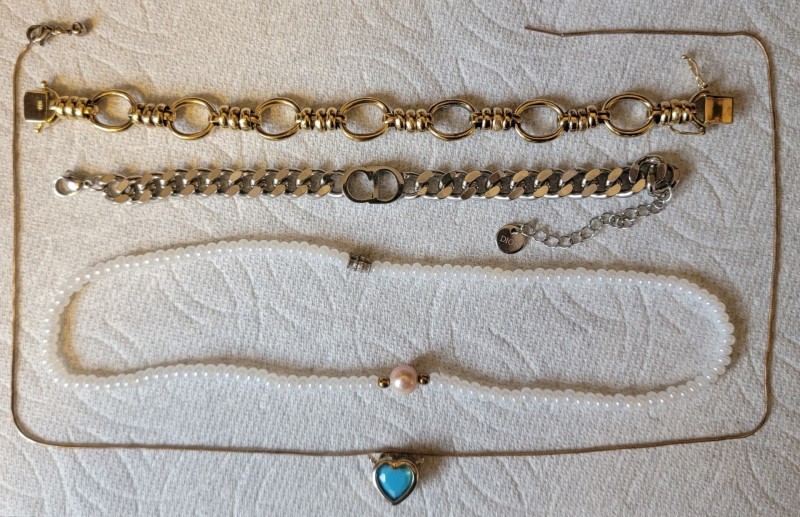
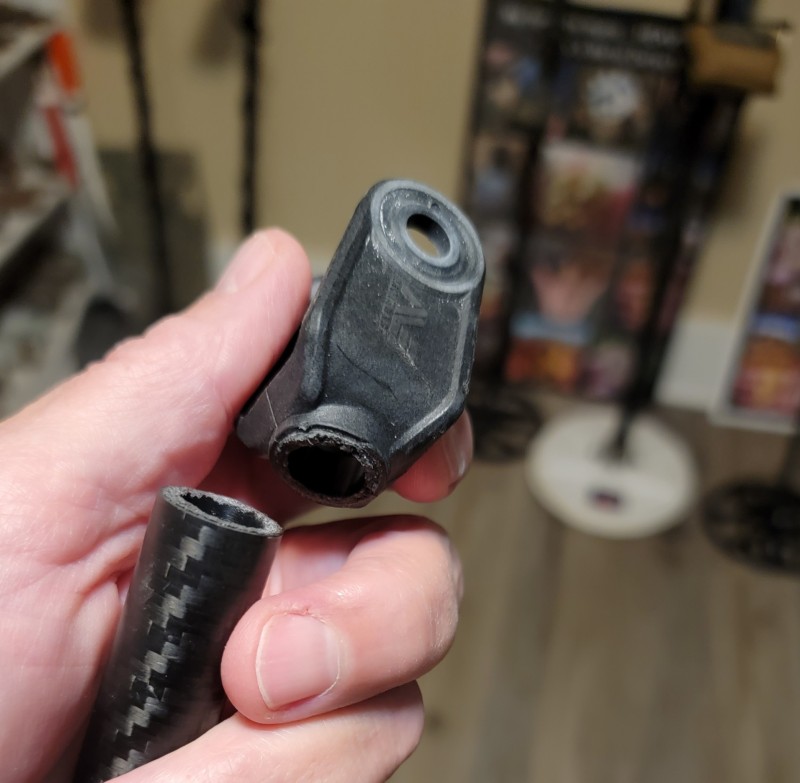
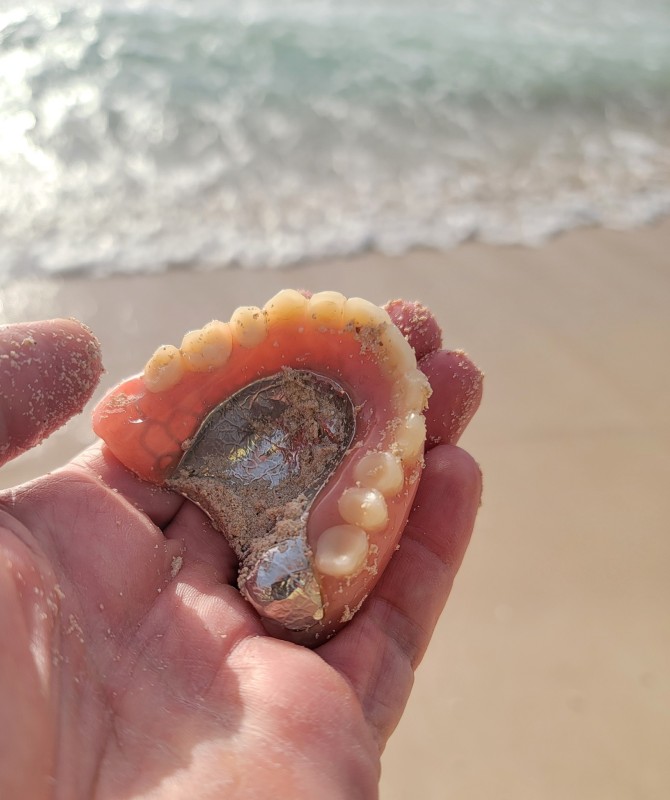
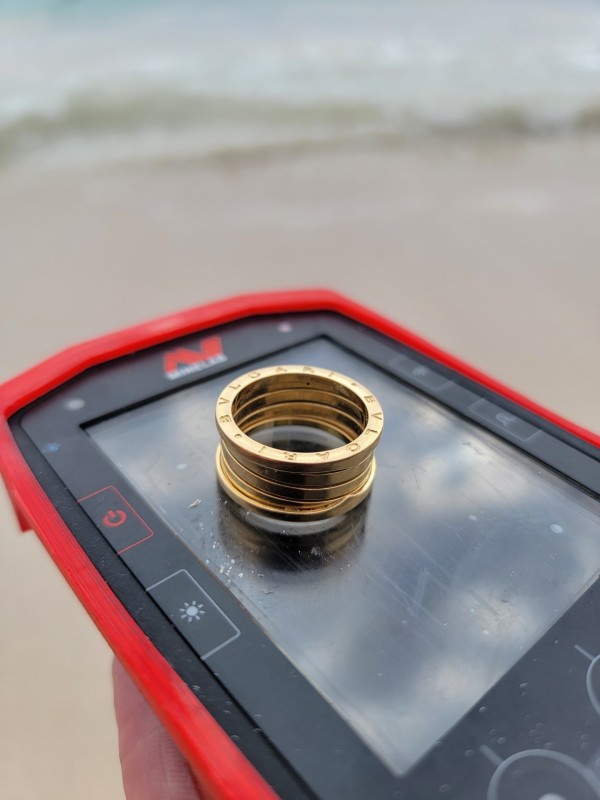


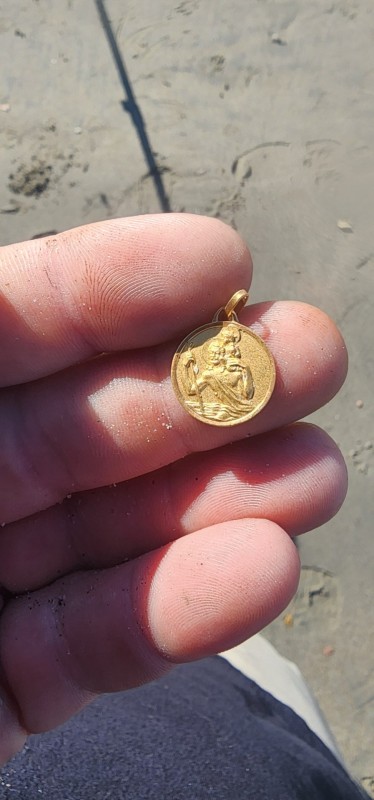
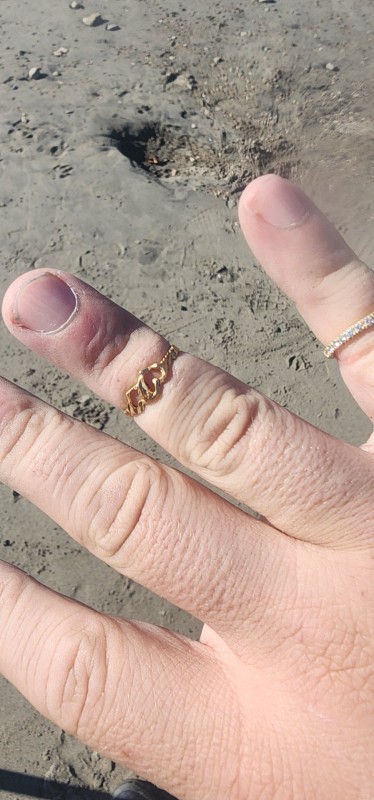
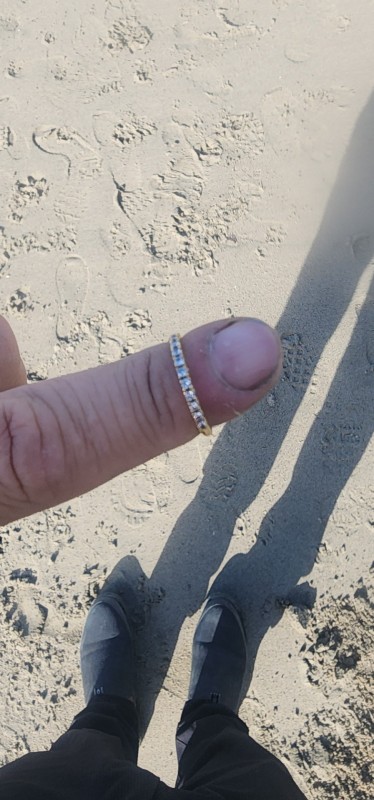
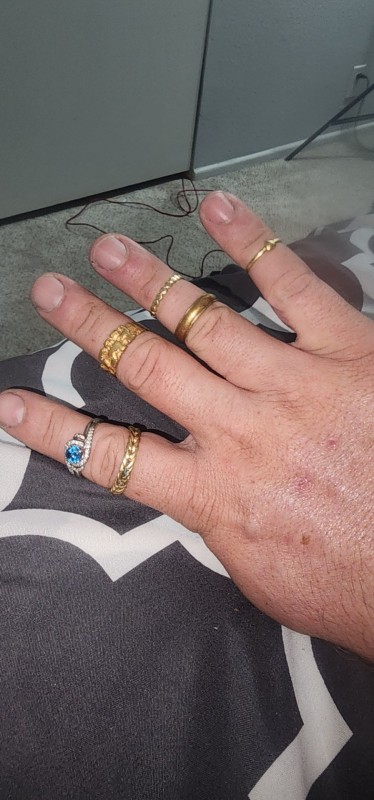
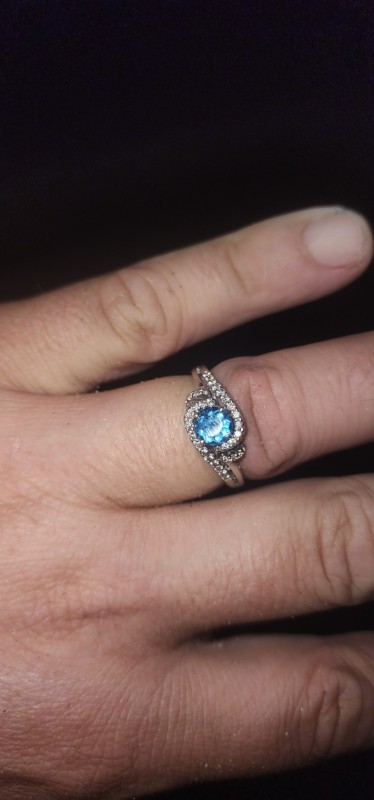
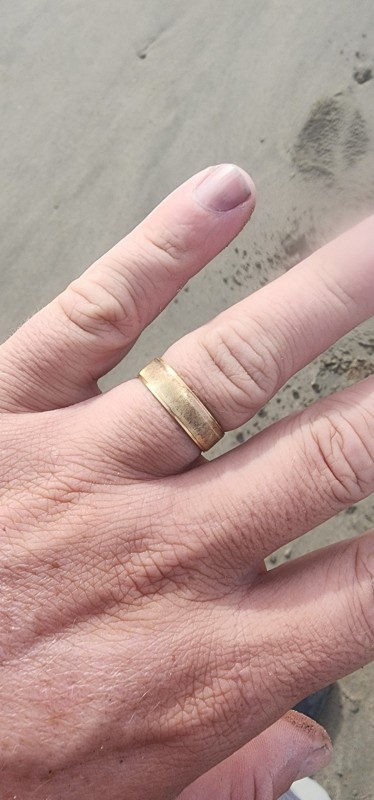
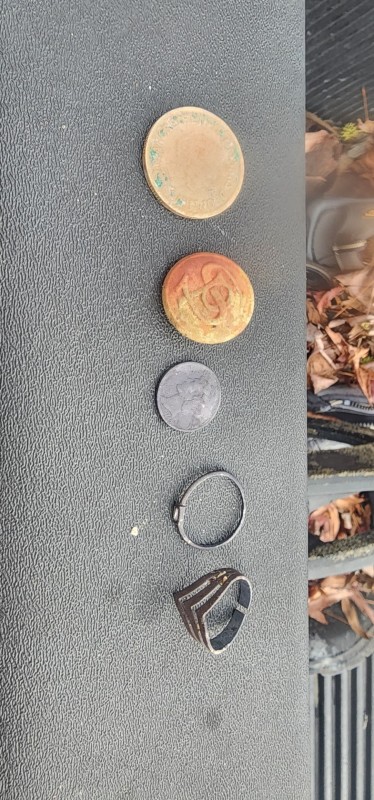


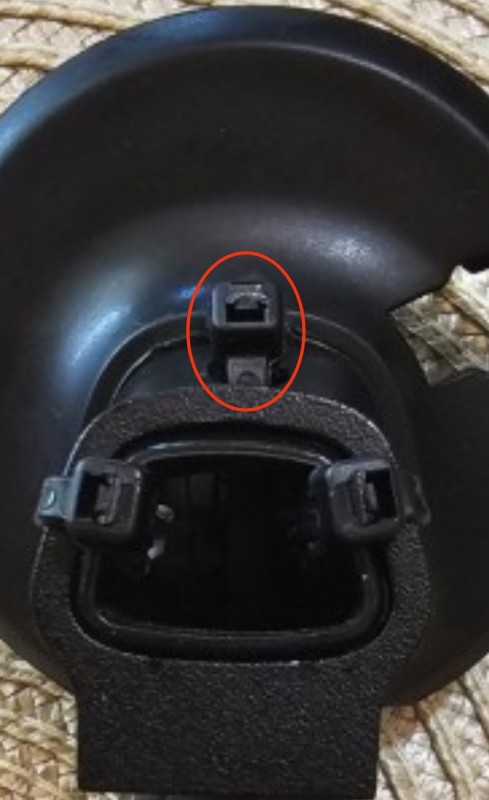

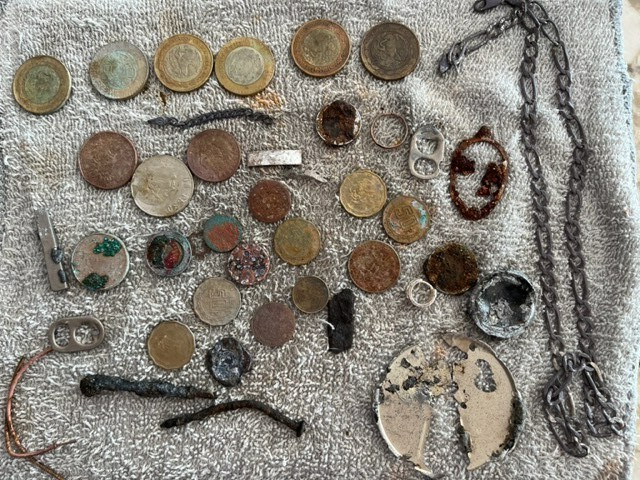
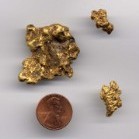
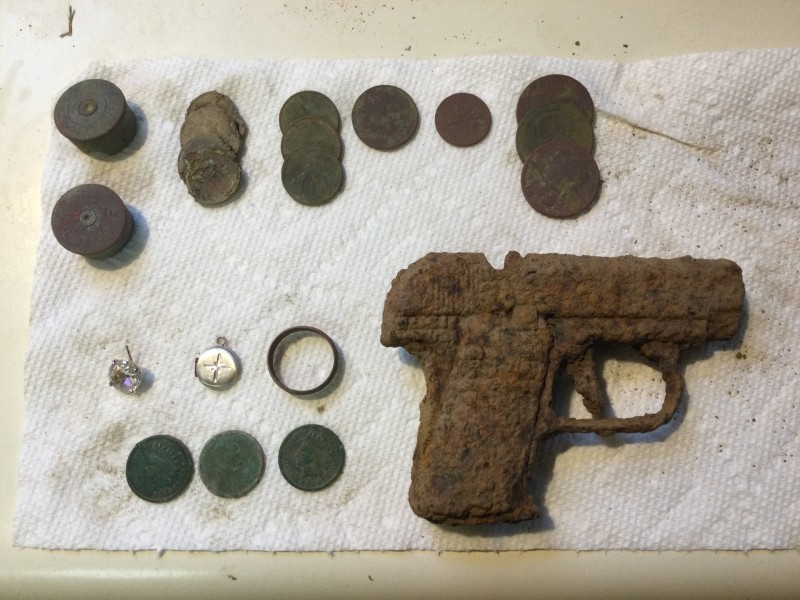
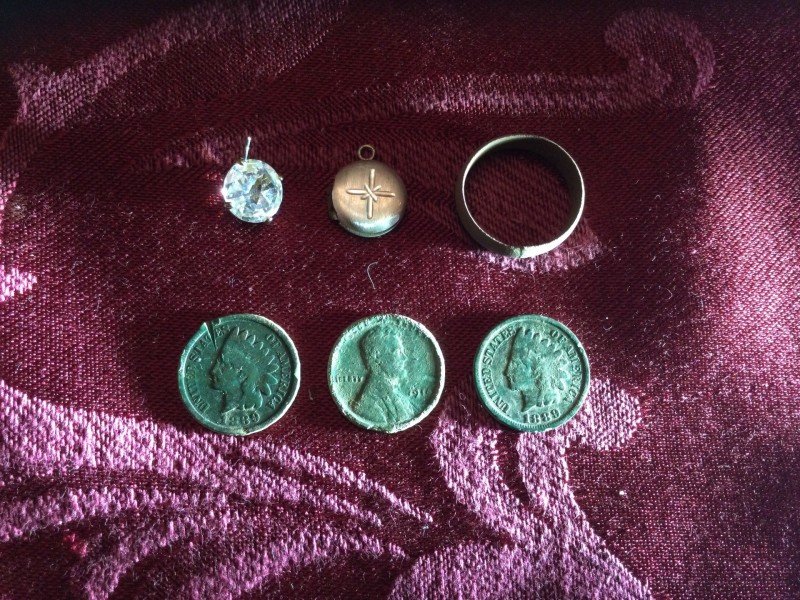
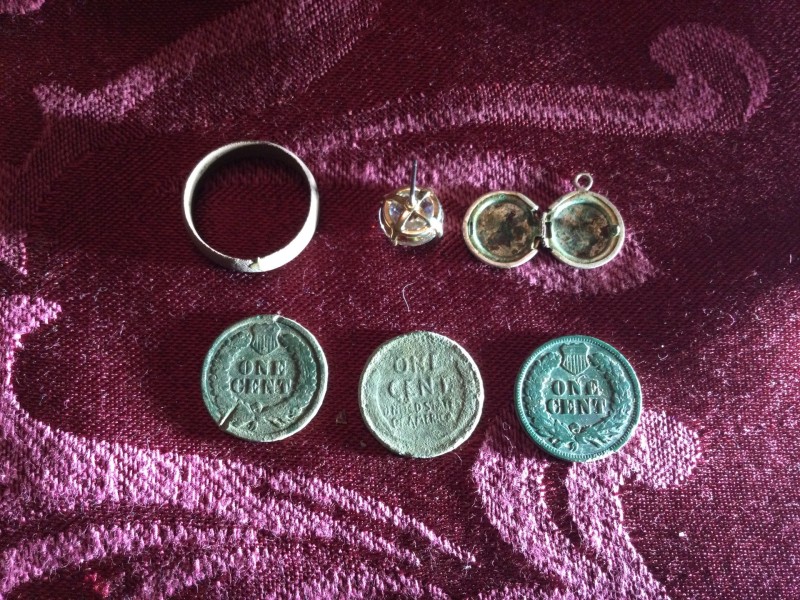
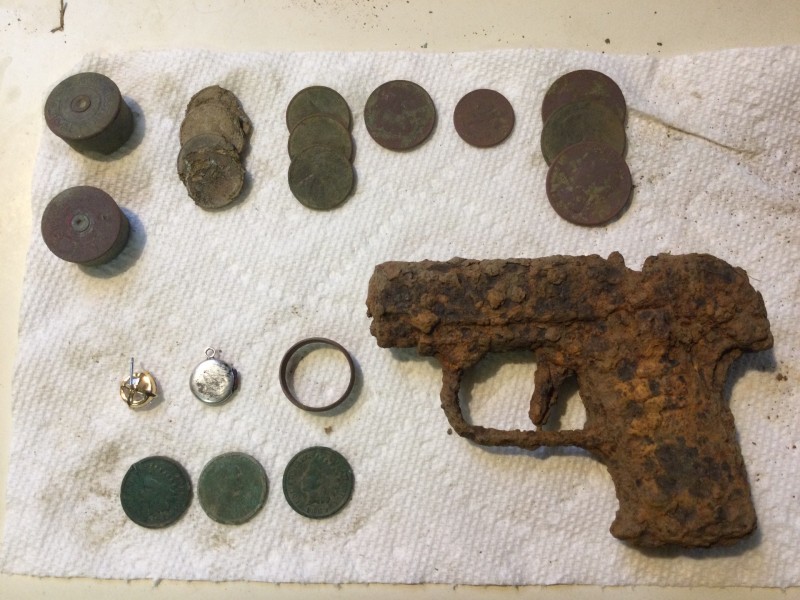

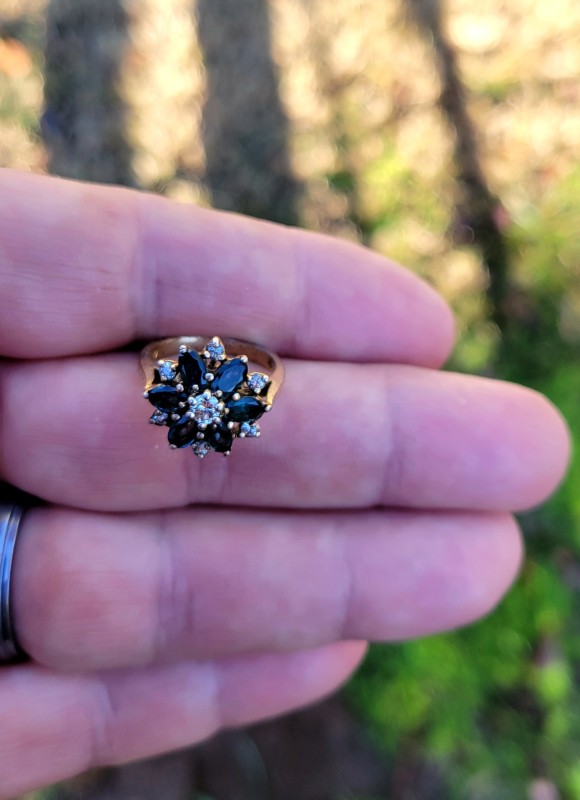
.thumb.jpg.95344db3aeef0a4c6c73420daa366191.jpg)


